
Architectural description of adult beech trees, Aigoual 2014
Yves Caraglio

Sampling of micro cores. Cambium phenology and growth in holm oak wood, Puechabon 2008
Yves Caraglio
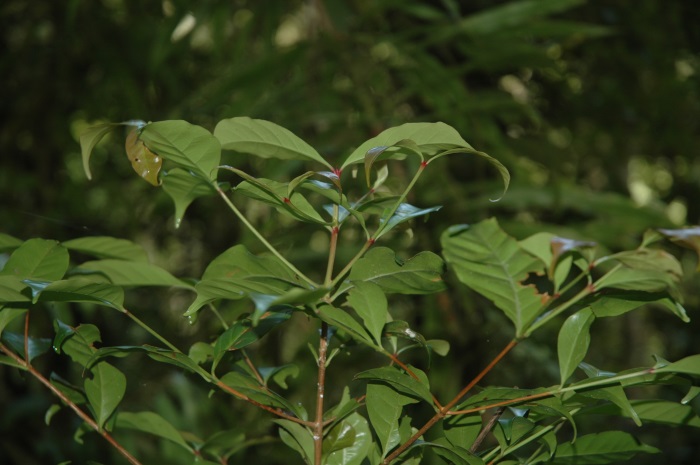
Coffea kianjavatensis, Vativati mount, Malagasy
Sylvie-Annabel Sabatier

Secondary forest in Cameroon where Cecropia cf. peltata, an invasive exotic species, is in competition with the local species Musanga ceropioides
Patrick Heuret
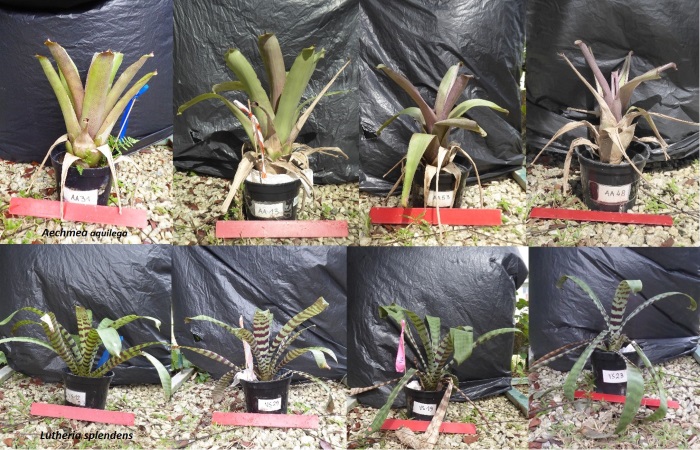
Effect of a drought gradient in two species of bromeliads, Aechmea aquilega and Lutheria spleendens
Céline Leroy
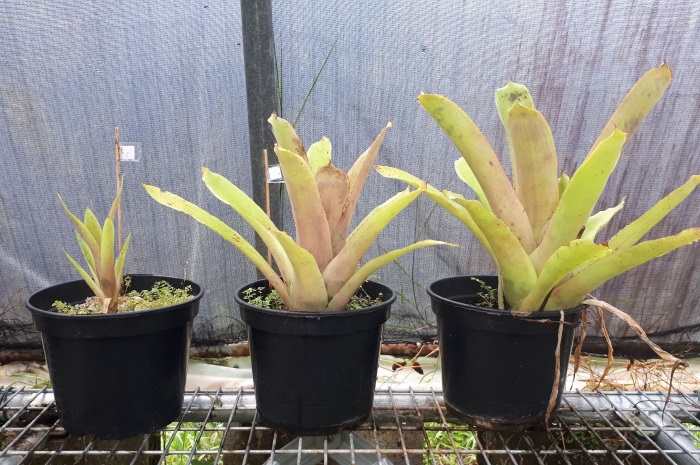
Effect of a substrate gradient on the development of Aechmea aquilega
Céline Leroy
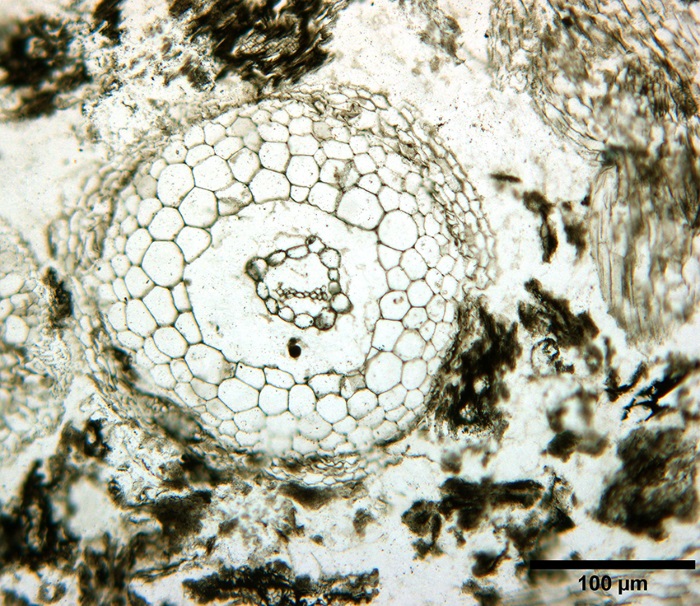
Section of a young fossil root of Permian age
Anne-Laure Decombeix
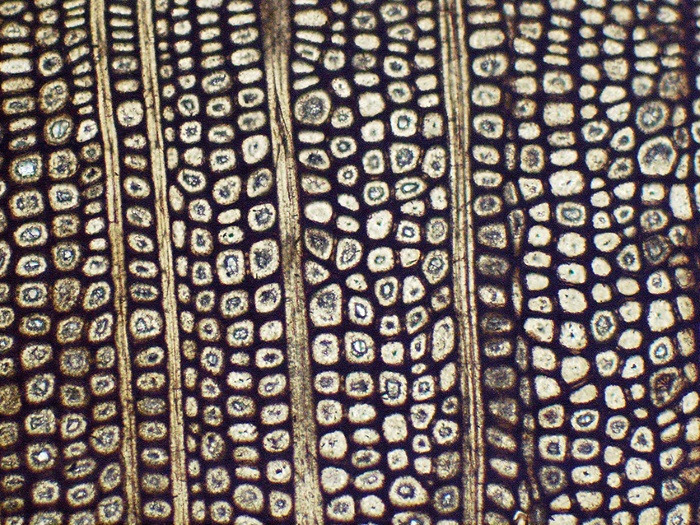
Cross section of Carboniferous fossil wood.
Anne-Laure Decombeix

Carboniferous fossil trunk
Brigitte Meyer-Berthaud

Bundles in the center of a leaf’s rachis of Simaba.
Anne-Laure Decombeix

Detail of the anatomy of Simaba's rachis
Anne-Laure Decombeix
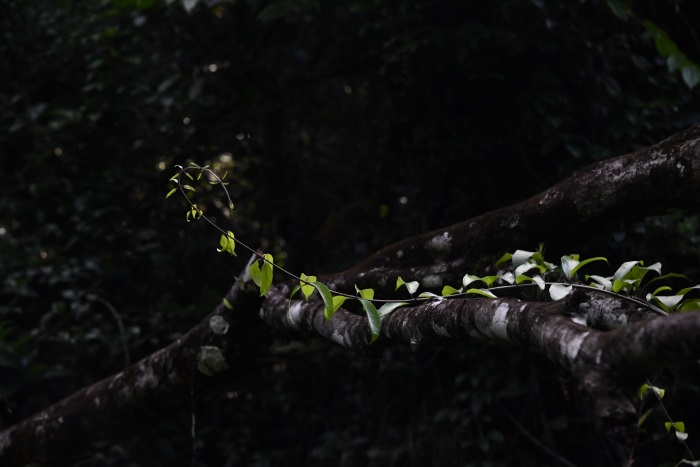
A 'searcher' shoot of Condylocarpon guianensis (Apocynaceae), a voluble liana with rapid growth capable of colonizing open environments
Tom Hattermann
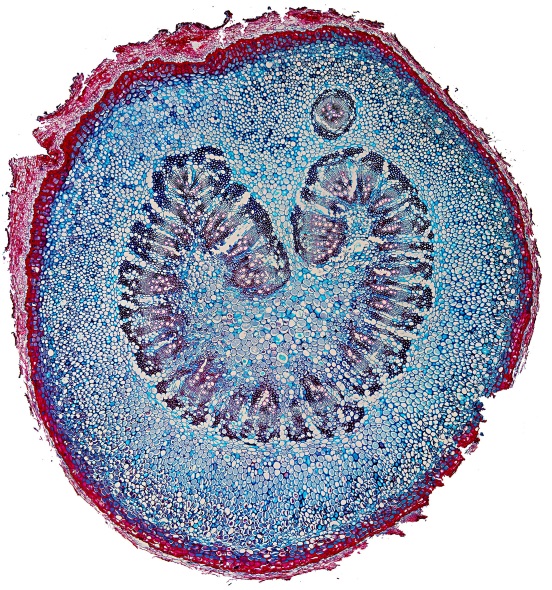
Cross-section of a petiole of Carapa guianensis (Meliaceae)
Sébastien Levionnois
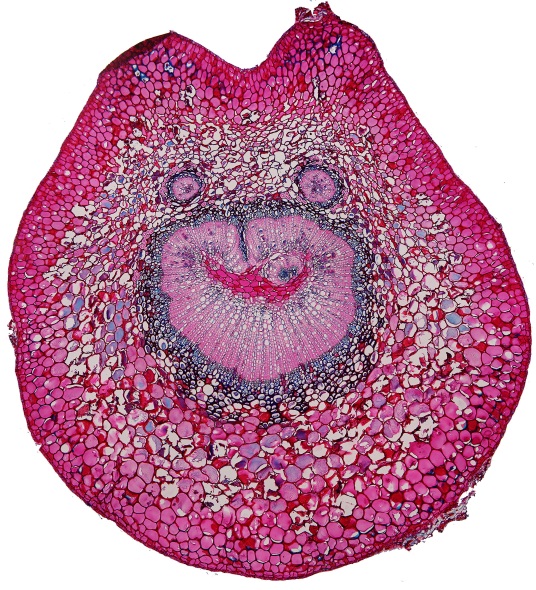
Cross section of a petiole of Chaetocarpus schomburgkianus (Peraceae)
Sébastien Levionnois
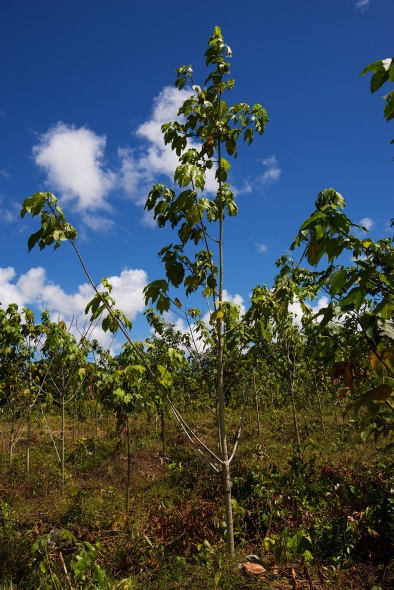
Planting of Bagasses (Bagassa guianensis, Moraceae) in French Guiana; Feder ForestTreeCulture project
Patrick Heuret

Retrospective reconstruction of the African corkwood tree (Musanga cecropioides) through the study of morpho-anatomical markers such as the pith trajectory
Patrick Heuret

Study of the root system of Bagasse (Bagassa guianensis, Moraceae) in plantations (Feder ForestTreeCulture project; French Guiana
Eric-André Nicolini
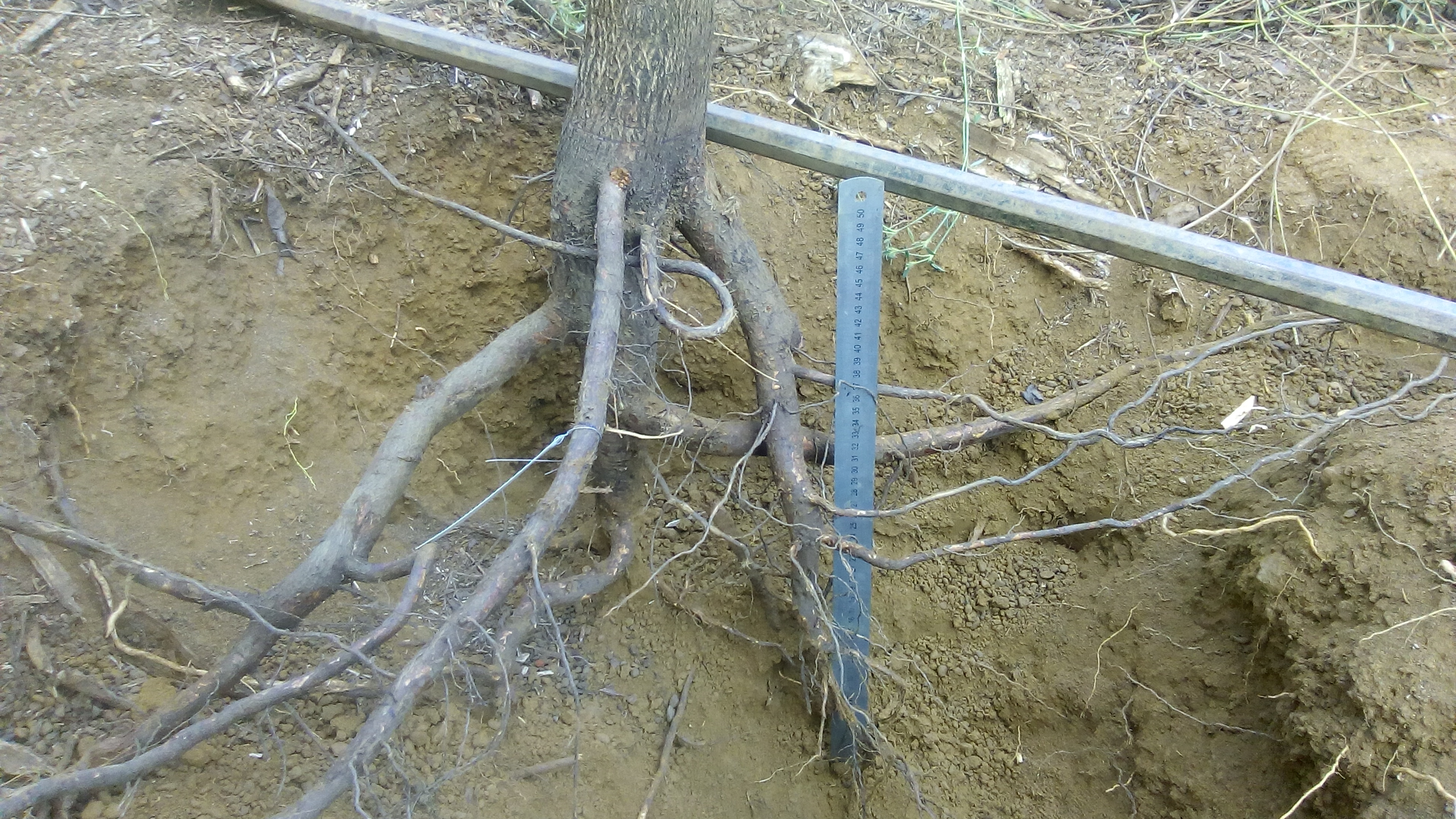
Study of the root system of teak (Tectona grandis, Verbenaceae) in plantations (Feder ForestTreeCulture project; French Guiana
Eric-André Nicolini

Trials of Teak, Bagasse, Niangon and Sam Cedar plantations in French Guiana (Feder ForestTreeCulture project; French Guiana)-
Eric-André Nicolini

Trials of Teak, Bagasse, Niangon and Sam Cedar plantations in French Guiana (Feder ForestTreeCulture project; French Guiana)-
Eric-André Nicolini
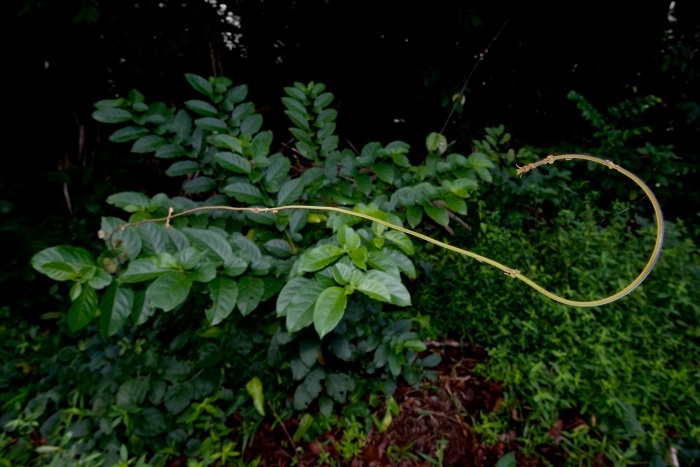
Stigmaphyllon sinuatum (Malpighiaceae), a fast-growing voluble liana capable of crossing spaces of more than one meter with little biomass
Patrick Heuret

Cerberiopsis candelabrum, a monocarpic New Caledonian tree species
Camille Salmon
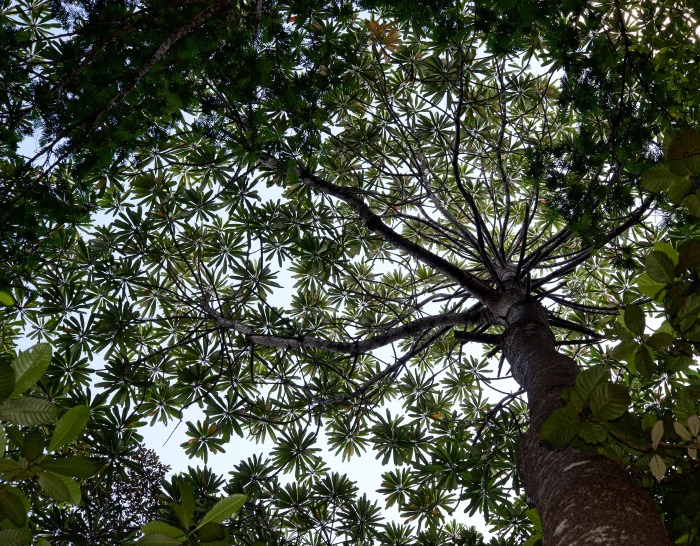
Cerberiopsis candelabrum, a monocarpic New Caledonian tree species
Patrick Heuret
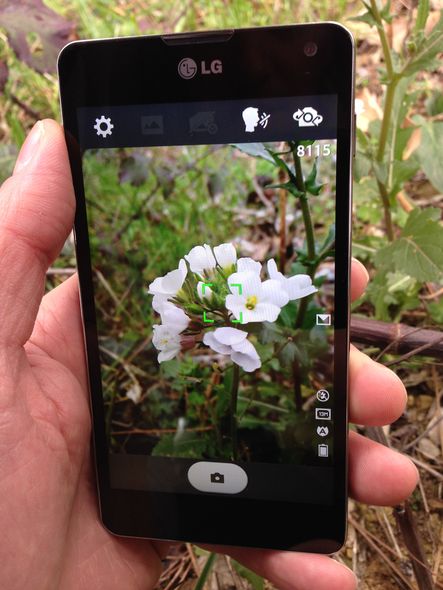
User interface of the Pl@ntNet plant identification app (android version)
Antoine Affouard

User interface of the Pl@ntNet plant identification app (IOS version)
Inra

Creation of a botanical observation using a smartphone.
Cirad

Visual query used to automatically identify a Mediterranean woody species
Cirad
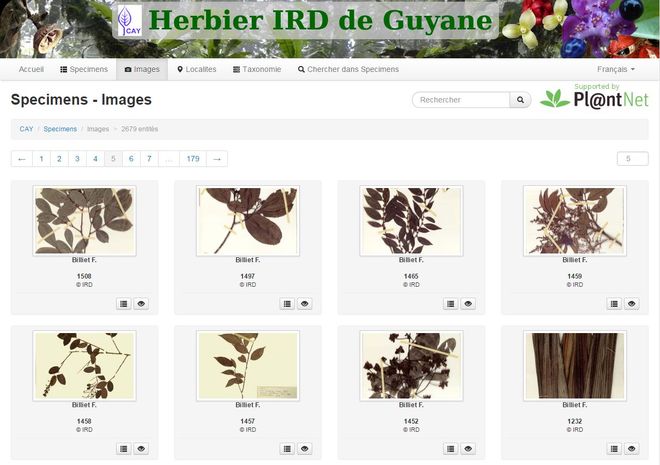
User interface of the IRD herbarium of French Guiana, consulted through the web application Pl@ntNet-publish
ird

Moraea polystachya (Thunb.) Ker Gawl
Cirad

Identification of different areas (forest, savanna, bare ground,…) by analysis of textural properties coupling local histograms and cooccurrence indices in a high resolution aerial image.
Philippe Borianne

Realistic 3D Mapple tree view, issued from growth simulation. The rendering process involves texture mapping, global illumination (shadows) and depth of field effect simulation.
Philippe Borianne
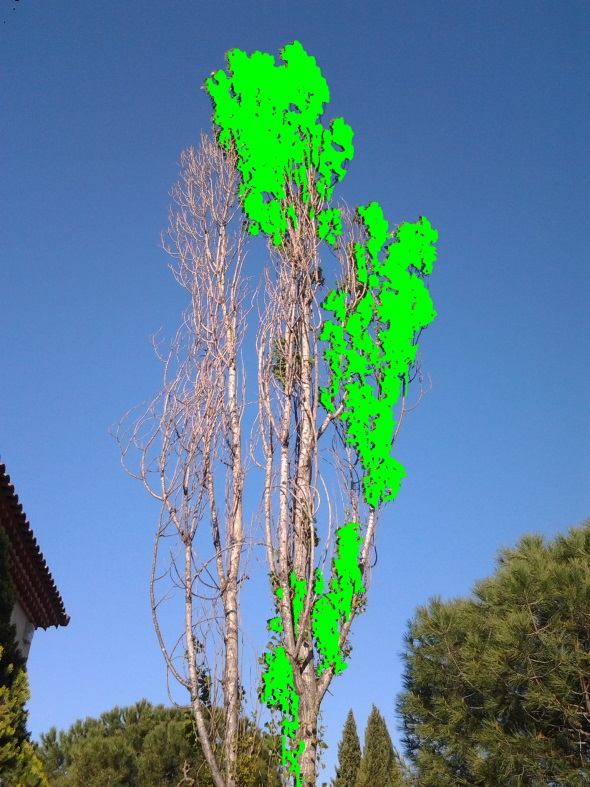
Semi-supervised segmentation of in situ birch color image combining color quantization, adaptive fragmentation of the expert learning areas and labeling propagation.
Philippe Borianne

Automated delineation of tree-rings by active polygonal outline propagation in X-ray computed tomography images of Norway Spruce.
Philippe Borianne
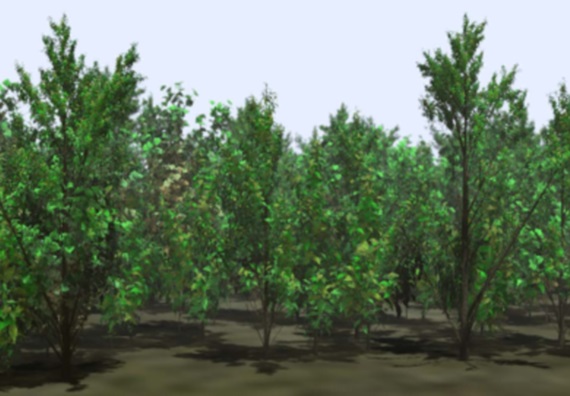
A virtual scene composed by 217 differents plants issued from two growth simulations only. Both simulations (one per species) result in a time base graph. At rendering stage, the graph traversal can reconstruct a plant at any past growth stage. Representations variability gets also profit from light random geometrical variations.
Philippe Borianne

Delineation of wood rings (downer left) from photographic image (upper left) by a point-based active contour using the magnitude (upper right) and orientation (downer right) maps issued from the Dual Tree Complex Wavelet Transform to simulate a Gradient Vector Flow behaviour.
Philippe Borianne

Identification of radial cell files from light microscopy wood image (upper left) based on the building of the most aligned ways (downer right) in the adjacency graph of the Watershed diagram (downer left) produced after multi-scale filtering (upper right).
Philippe Borianne

Cell file tracking in light microscopy hardwood image mosaic combining multi-scale filtering, watershed diagram and simple result graph fusion.
Philippe Borianne

Cell file tracking in light microscopy softwood image mosaic combining multi-scale filtering, watershed diagram and simple result graph fusion. image mosaic combining multi-scale filtering, watershed diagram and simple result graph fusion.
Philippe Borianne

Foreground root detection in colour images mixing filtering in the spectral space and automated adaptive threshold in the colour space: application to the geometrical characterization of young rice root systems within the Rhizoscope phenotyping plateform.
Philippe Borianne
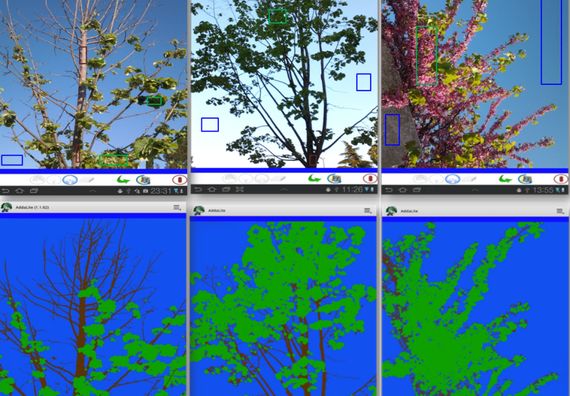
Semi-supervised classification of colour urban tree images by Euclidean distance into the L*a*b* colorimetric model.
Philippe Borianne
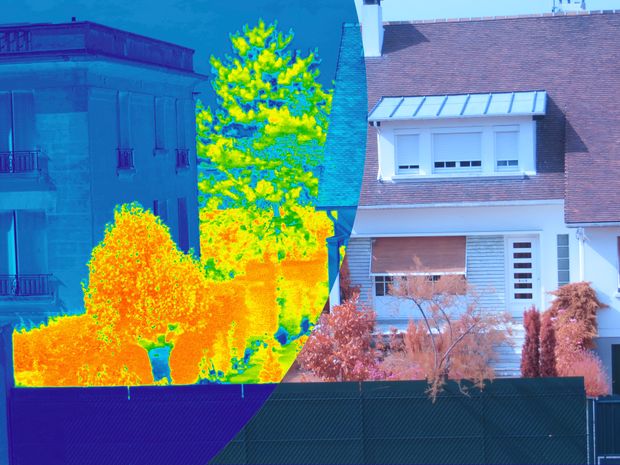
Plant characterization from NirGB hybrid urban tree images by evaluation of a normalized difference vegetation index.
Philippe Borianne

Realistic 3D Chestnut tree view, issued from growth simulation. The rendering process involves texture mapping, global illumination (shadows) and depth of field effect simulation.
Philippe Borianne

Pseudo-realistic landscape real time view, at late autumn, close to sunset, and issued from functional landscape simulation. The functional landscape simulation computes the biomass production according to the global and local environmental conditions (temperature and water availability), involving a hydric propagation model and a simplified GreenLab plant model. The sphere volumes stand for the accumulated biomass per acre. Sun position, sky colour, lighting parameters are computed according to the simulation date, time, and geolocalisation. The depth of field effect is post processed.
Philippe Borianne
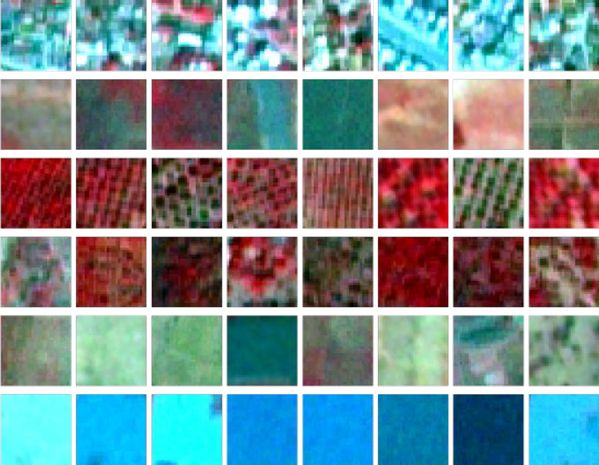
Bag of words issued from the training textures and used for the texton-based segmentation in remote sensing.
Philippe Borianne
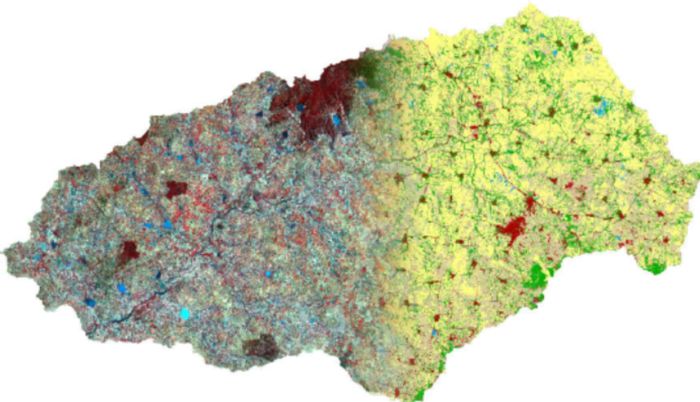
The Kudaliar watershed classification resulting of a the adapted summary method of the Inter Coefficient Products given by the Dual Tree Complex Wavelet Transform application applied to a 100 feature texton codebook.
Philippe Borianne
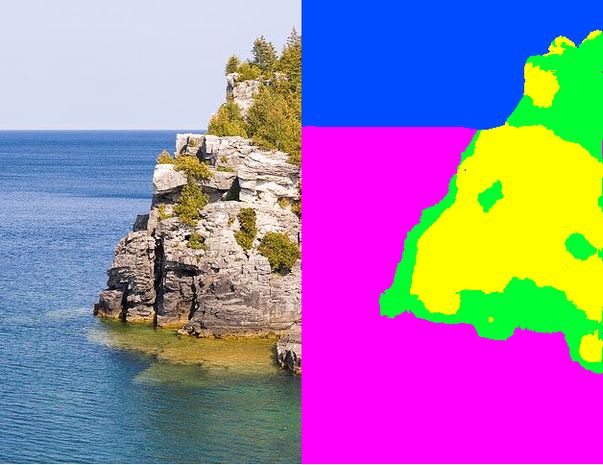
Texture based classification of a natural landscape with 4 main classes : water, sky, rocks, vegetation
Philippe Borianne
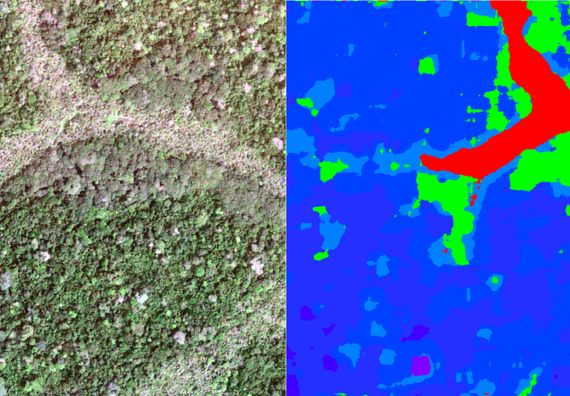
Texture based classification of an area in tropical forest.
Philippe Borianne
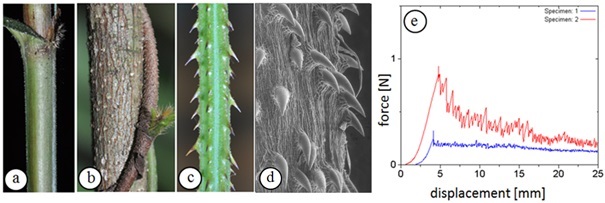
Structures et mécanismes d'ancrage comme source de technologies biomimétiques chez les plantes grimpantes de forêt tropicale humide (a) micro-crochets de "l'herbe rasoir" Scleria secans (Cyperaceae) (b) tige volubile avec micro-crochets de Byttneria cordifolia (Malvaceae) (c) macro-crochets de Mimosa sp. (Mimosaceae) (d) crochets renforcés en silice chez Davilla rugosa (Dilleniaceae) (e) courbe de force de déplacement et propriétés d'anisotropies de Byttneria cordifolia (rouge -contre les crochets, bleu- dans la direction des crochets).
Nicholas Rowe
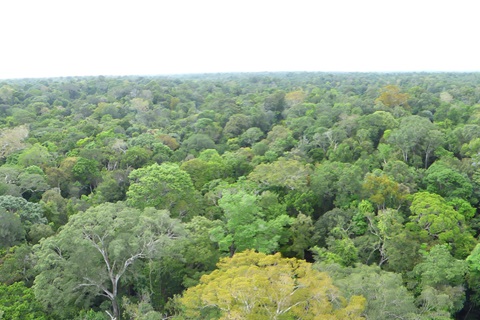
A view from the top : forest canopy in Paracou pictured from the Flux tower
Grégoire Vincent
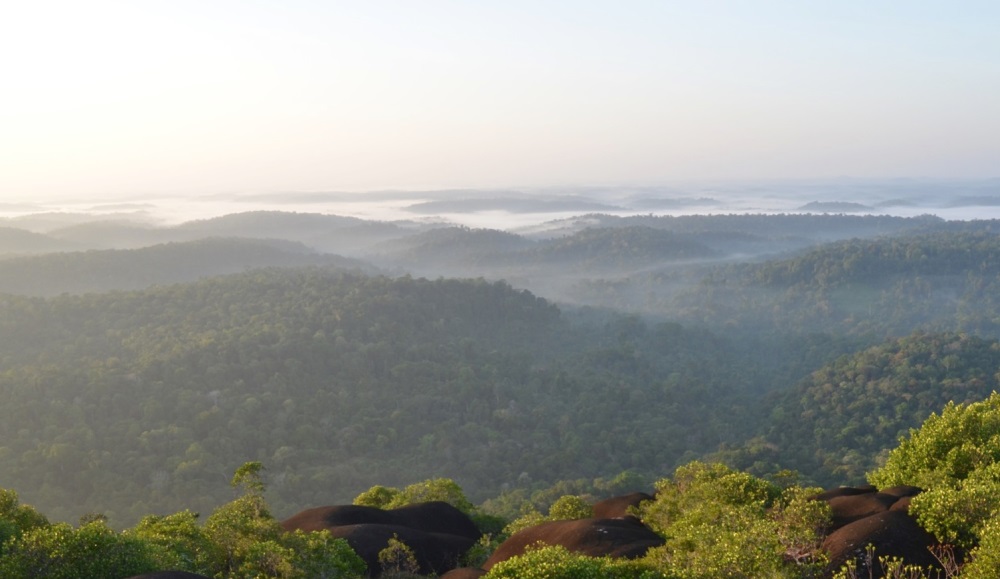
The rainforest at dawn from the top of the inselberg at the Nouragues research station, French Guiana.
Isabelle Maréchaux

Root systems of Avicennia germinans mangrove trees after mud erosion by waves, French Guiana, 2015
Christophe Proisy
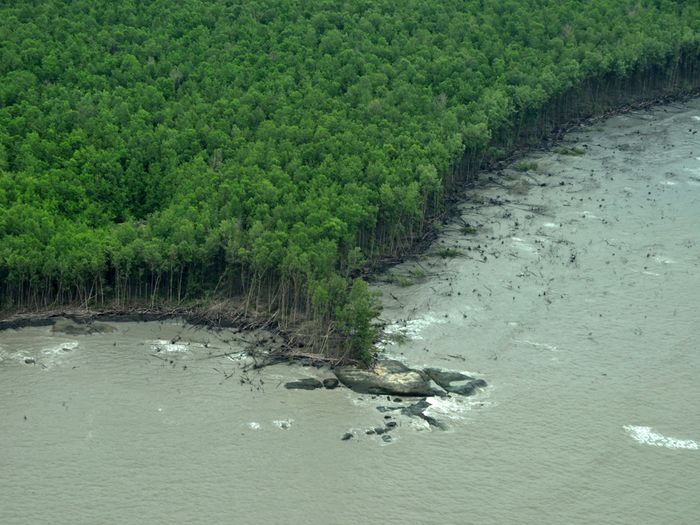
Mangroves as sentinels of coastal changes. The photographs shows an erosion phase caused by wave action on muddy substrate, French Guiana, 2010
Christophe Proisy

Mono-cultural plantations of mangrove trees: far from sustainability? The photograph shows extensive plantations of Rhizophora in the Mahakam delta, Kalimantan, Indonesia, 2010
Christophe Proisy
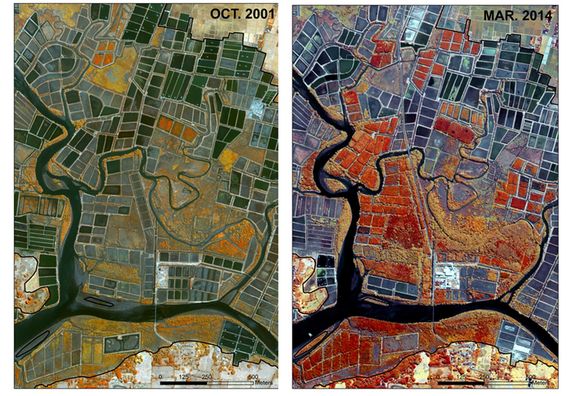
Planted vs. natural mangroves? The graph shows the evolution trends over 13 years of the extent of these two 'types' of mangroves occurred over 13 years. Plantation programs cannot compete with natural mangroves in terms of expansion rates (and, probably in terms of ecosystem services and sustainability). Projet INDESO, 2015
Christophe Proisy

Natural forest regeneration after a landslide in eastern Tibet
Alexia Stokes
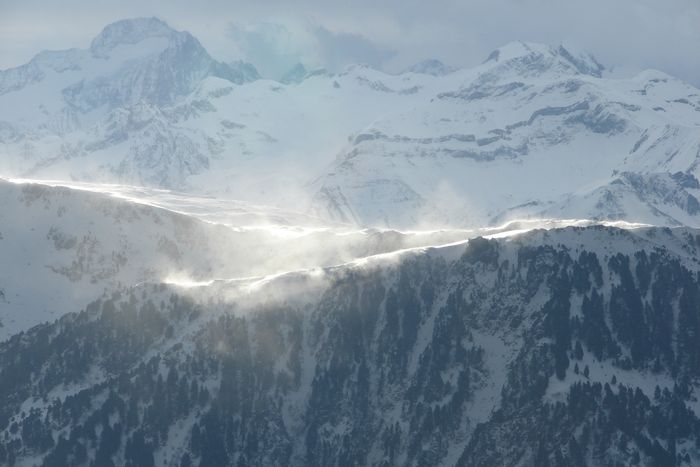
Soil temperature is the major driver of root growth in temperate mountain forests
Alexia Stokes
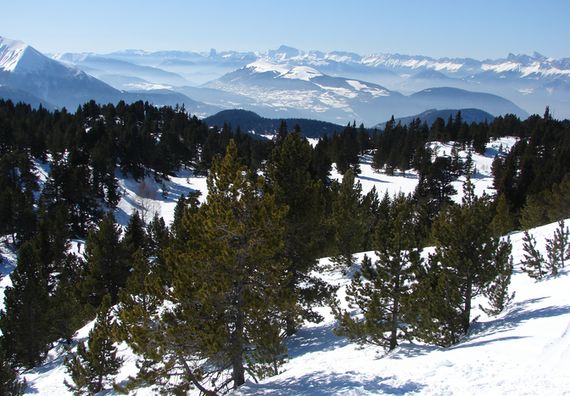
Soil temperature is the major driver of root growth in temperate mountain forests
Alexia Stokes

Roots stabilize soil against erosion and shallow landslides
Alexia Stokes

Belowground ecosystem services include soil conservation and carbon sequestration
Alexia Stokes
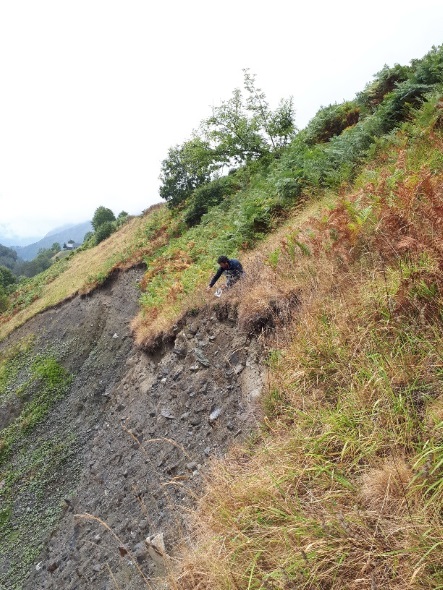
Soil sampling on Moraine in the Bastan valley
Jean-Luc Maeght

Top of the Bastan catchment area
Jean-Luc Maeght
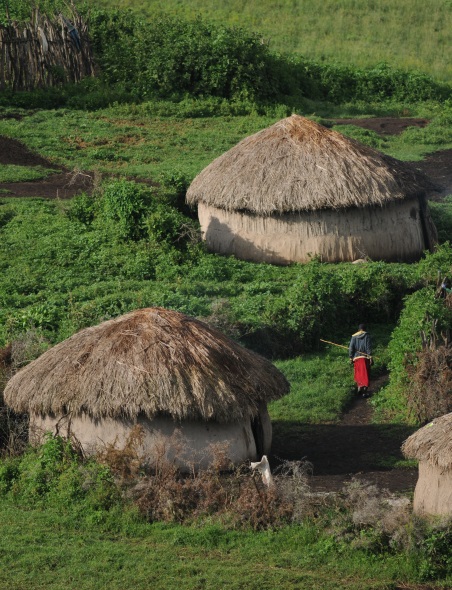
Masai Huts in mountain ecosystems
Cédric Gaucherel
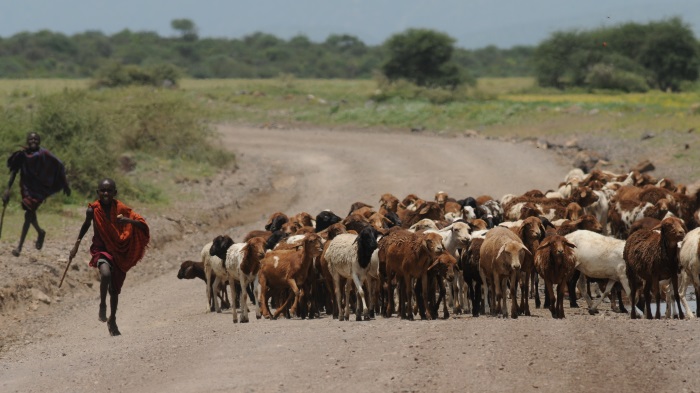
Pastoralism in semi-arid ecosystems (with child shepherd).
Cédric Gaucherel

Use of rain shelter to experimentally change precipitation entering the tank bromeliad Guzmania berteroniana in Puerto Rico
Céline Leroy

Manipulation of aquatic invertebrates in a tank bromeliad by Régis Céréghino and Céline Leroy
Bruno Corbara

Osteocephalus oophagus, amphibian from Hilidae family, reproducing in the tank bromeliad Aechmea aquilega in French Guiana
Céline Leroy
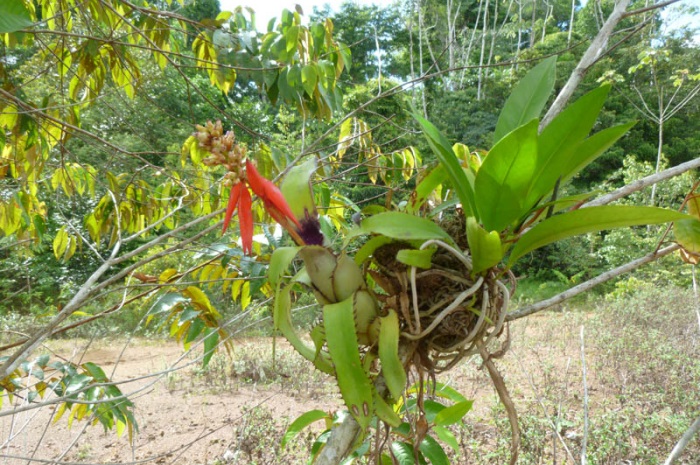
Ant garden with the tank bromeliad Aechmea mertensii in French Guiana
Céline Leroy

Domatia in the tendril of Nepenthes bicalcarata harboring a queen of the ant Camponotus schmitzi symbiotically associated with the carnivorous plant.
Vincent Bazile

Pitchers of Nepenthes albomarginata feeding on termites (Hospitalitermes sp.) attracted by a band of white edible trichomes.
Vincent Bazile
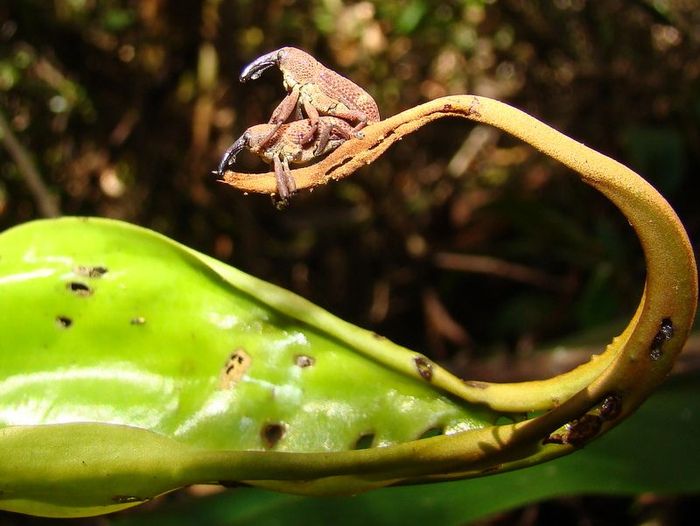
Weevil Alcidodes sp. copulating and feeding on a Nepenthes tendril.
Vincent Bazile
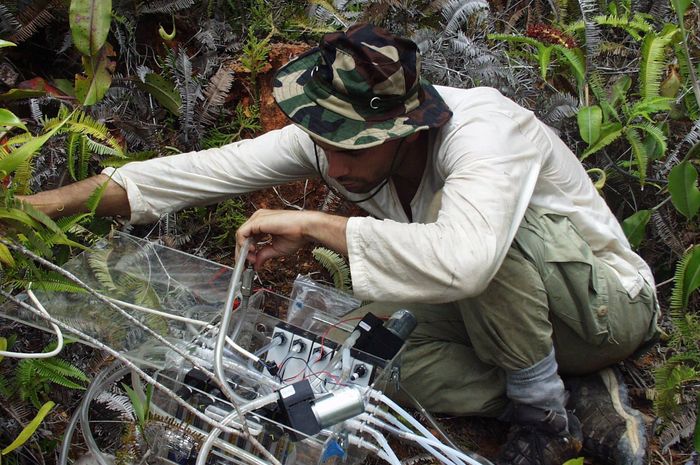
Experimental set-up allowing the capture of volatile compounds delivered by a Nepenthes pitcher.
Laurence Gaume

Pitcher of Nepenthes hemsleyana harboring the bat, Kerivoula hardwickii, from the feces of which it gains a nutritional benefit.
Vincent Bazile

Pitcher of Nepenthes mirabilis var. echinostoma attracting and trapping the giant ants of Borneo, Camponotus gigas.
Laurence Gaume
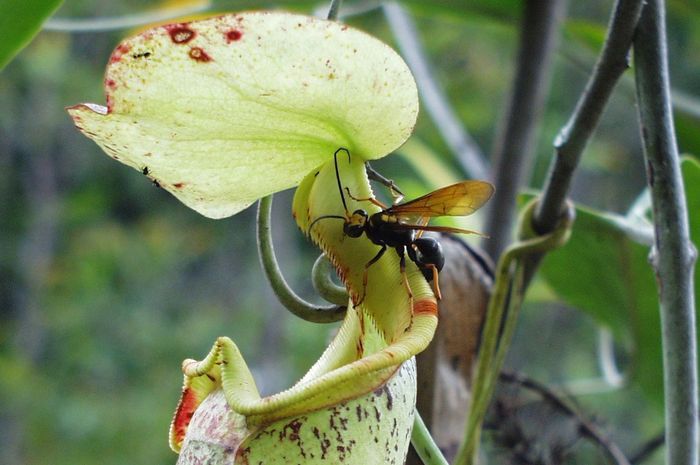
Pompilidae sp. attracted by the nectar of a pitcher of Nepenthes rafflesiana.
Laurence Gaume

Asian hornet, Vespa velutina, feeding on the nectar from the pitcher of a Sarracenia carnivorous plant
Corentin Dupont
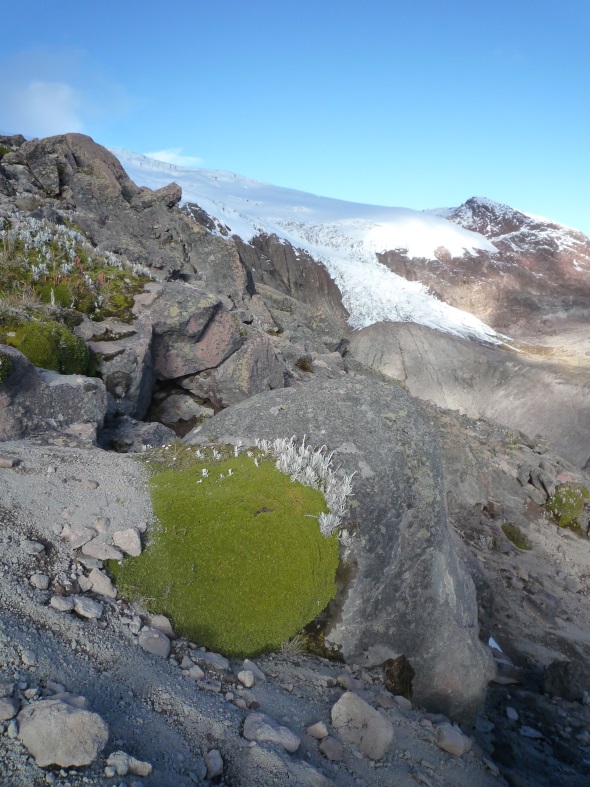
Positive interactions between alpine plants at the edge of life - Cayambe volcano, 4800m, Ecuador
Fabien Anthelme

Epiphytic orchid pollinated by a Sphinx - Yaoundé, Cameroon
Vincent Droissart

Ectomycorrhizal symbiosis, showing the apexes of the roots of Picea abies with the fungal mycelium. Photo taken in 2016 at 1700m altitude, Belledonne, French Alps.
Luis Merino-Martin
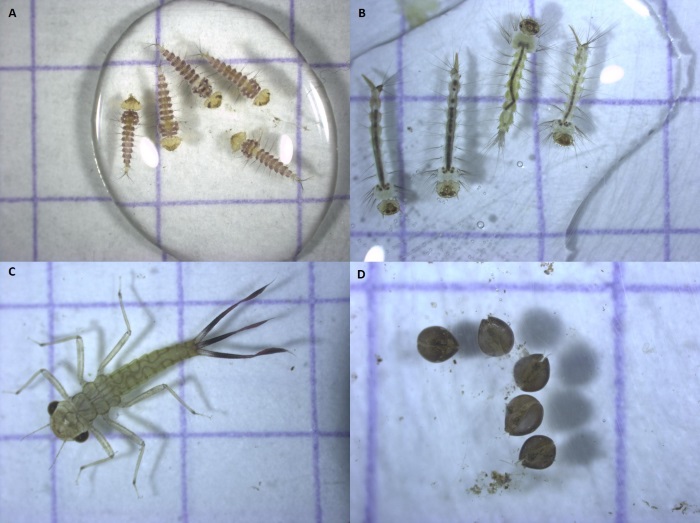
Some examples of the fauna living in the water-tanks of French-Guiana bromeliads with (A) Corethrella sp., (B) Wyeomyia aphobema, (C) Coenagrionidae and (D) Elpidium bromeliarium. This aquatic fauna plays a key role in the plants' nutrition.
Céline Leroy

Amynthas khami earthworms playing an important role in aeration and water transfer of soil as well as plant growth at the Msec DongCao experimental site in Vietnam.
Jean-Luc Maeght
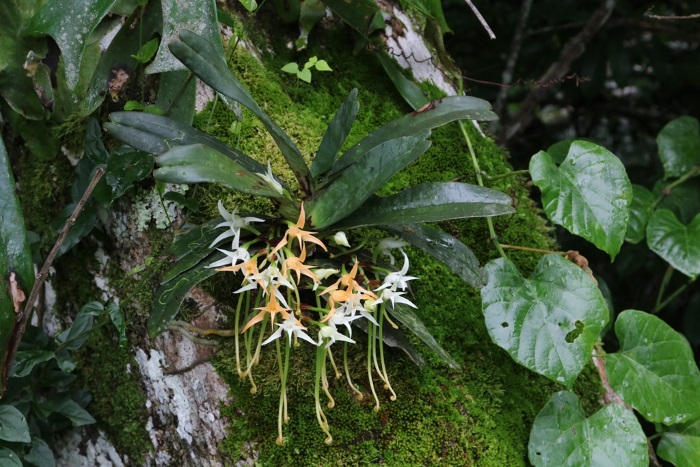
Cyrtorchis letouzeyi in bloom, a rare species of Central African epiphytic orchid pollinated by long-proboscis moths
Vincent Droissart
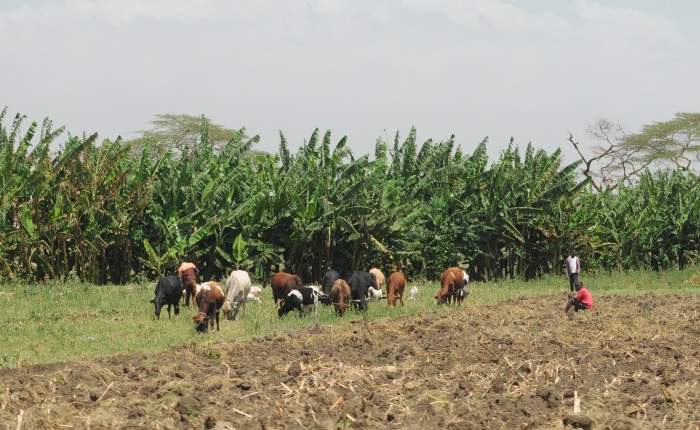
Pastoralism in semi-arid ecosystems (on slopes)
Cédric Gaucherel
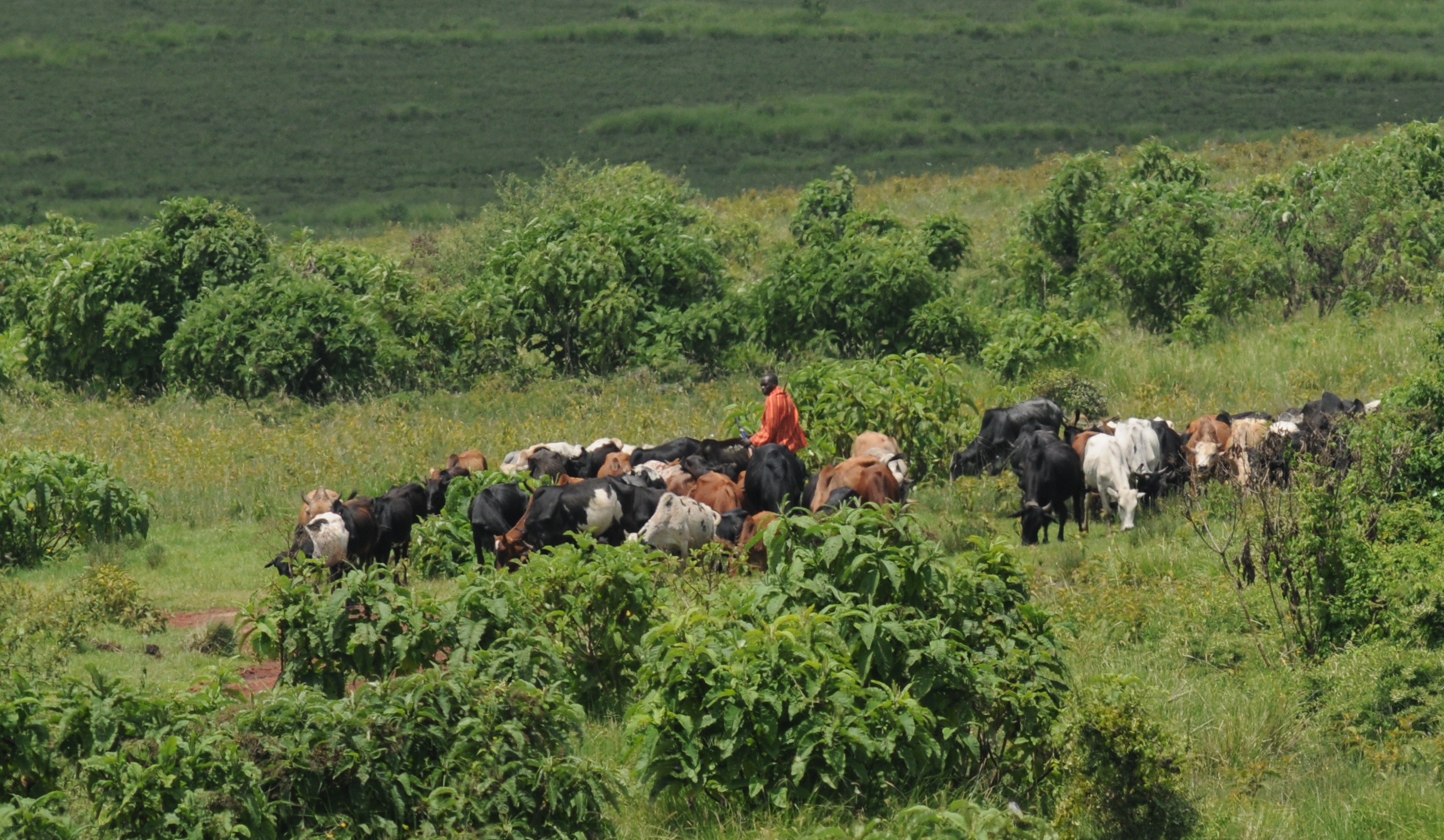
Interaction between agriculture and pastoralism
Cédric Gaucherel

Modeling biophysical processes on plants in stands.
Rémi Vezy. Licence sous CC BY-SA 4.0

3D model of a mature oil palm tree from the VPalm model
Rémi Vezy. Licence sous CC BY-SA 4.0
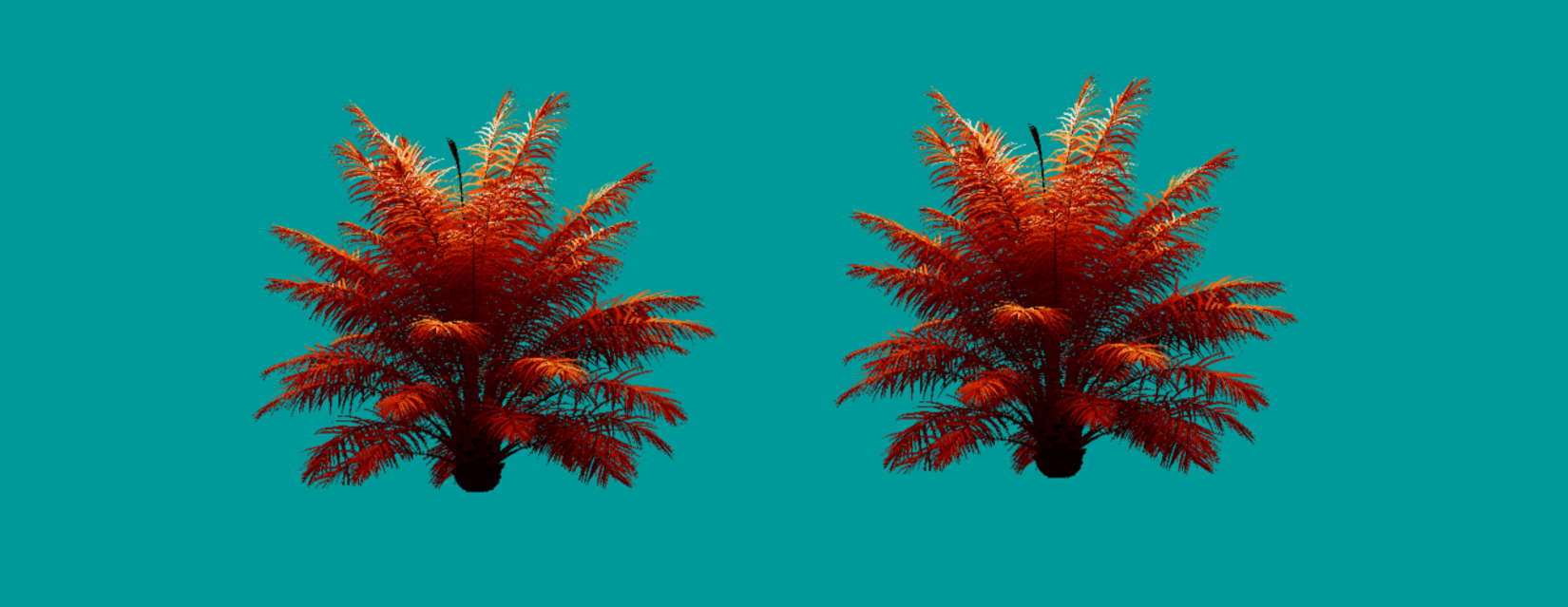
Visualisation de l’interception de la lumière simulée a l’échelle de l’organe pour deux palmiers dans une scène torique.
Rémi Vezy. Licence sous CC BY-SA 4.0

Reconstruction of the 3D architecture of a coffee tree.
Rémi Vezy. Licence sous CC BY-SA 4.0

Reconstruction of the 3D architecture of a coffee tree.
Rémi Vezy. Licence sous CC BY-SA 4.0

Representation of an agroforestry system based on coffee trees shaded by Erythrina simulated by the MAESPA model.
Rémi Vezy. Licence sous CC BY-SA 4.0
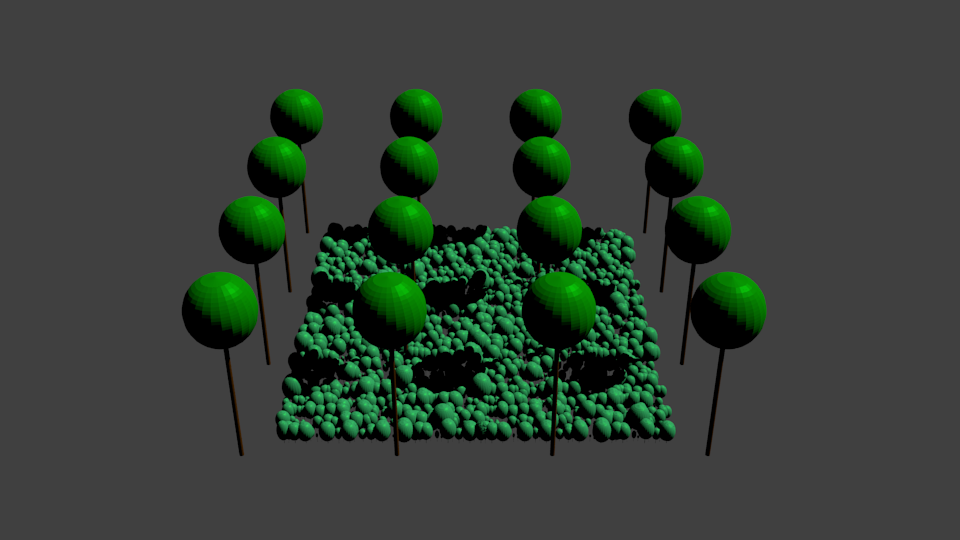
Representation of an agroforestry system based on coffee trees shaded by Erythrina simulated by the MAESPA model.
Rémi Vezy. Licence sous CC BY-SA 4.0

Case of an aquatic ecosystem (inspired by the temporary ponds observed in Camargue), for which trajectories are thoroughly reconstructed, and in which the specific richness of heritage species is analyzed. Some trajectories go through "healthy" ecosystem states (in green, many species) or not (red).
Cédric Gaucherel et al.
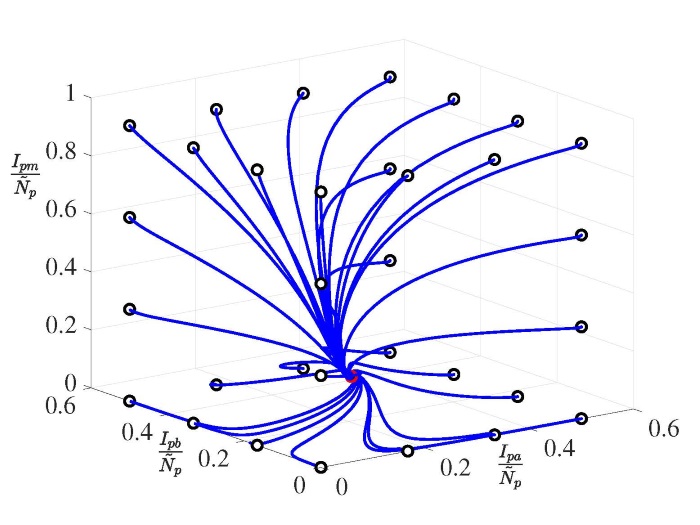
Trajectories of a co-infection model of the Maize Lethal Necrosis (MLN) that converges towards the MLN steady state.
Yves Dumont, 2021, Saint Pierre, île de la Réunion, France

R-shiny tool to study the bifurcation diagram of a Grass- Forest model, related to rainfall and fire frequencies.
A. Doizy et Yves Dumont

Distribution of E. kamerunicus, oil palm pollinator in Indonesia, at different times, simulated by a Multi-Agent System. oil palm pollinator in Indonesia, at different times, simulated by a Multi-Agent System.
Fabien Michel (LIRMM, Montpellier)
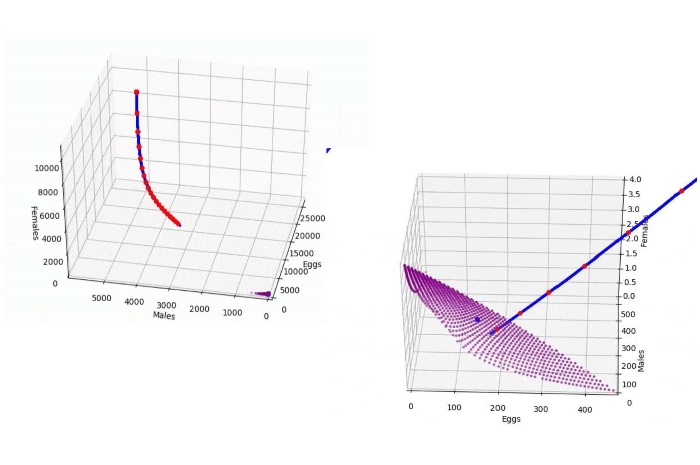
Simulation of a trajectory of a mosquito/pest population controlled by periodic releases of sterile males until it enters the basin of attraction of the "insect-free" equilibrium.
Martin Strugarek (LJJL, Paris)

Animated trajectory of a weekly periodic SIT control (red dots), with simulation of the consequence of problems in several releases. The system converges towards the basin of attraction (shown in purple) of the "insect-free" equilibrium.
Martin Strugarek (LJJL, Paris)

Venation detail of a Cupaniopsis (Sapindaceae), in New Caledonia.
Jérôme Munzinger
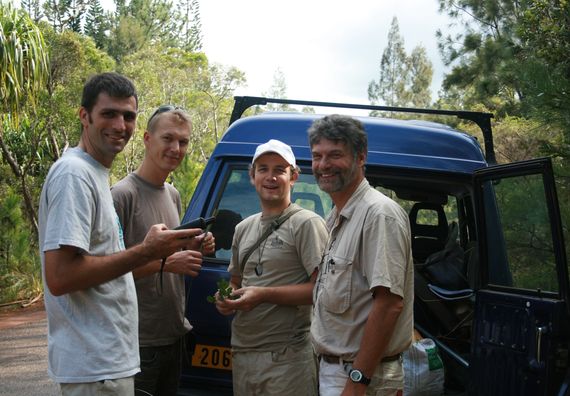
The members of the SSP-SAPIND project : Jérôme Munzinger, Martin Callmander, Sven Buerki, Pete Lowry, summit of Paéoua, New Caledonia.
Jérôme Munzinger

Anne-Laure Decombeix - Field trip in Antarctica 2010
Rudolf Serbet
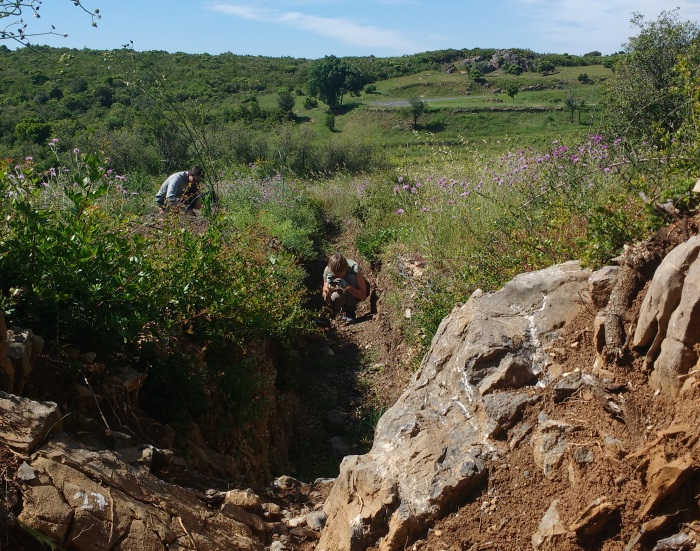
Prospecting for fossil plants of Early Carboniferous age (Cabrières - Hérault)
Anne-Laure Decombeix
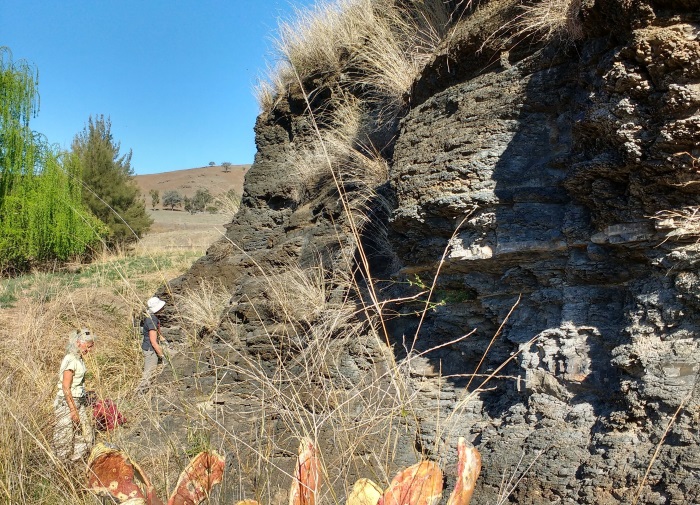
Prospecting for fossil plants of Devonian age (New South Wales - Australia)
Anne-Laure Decombeix
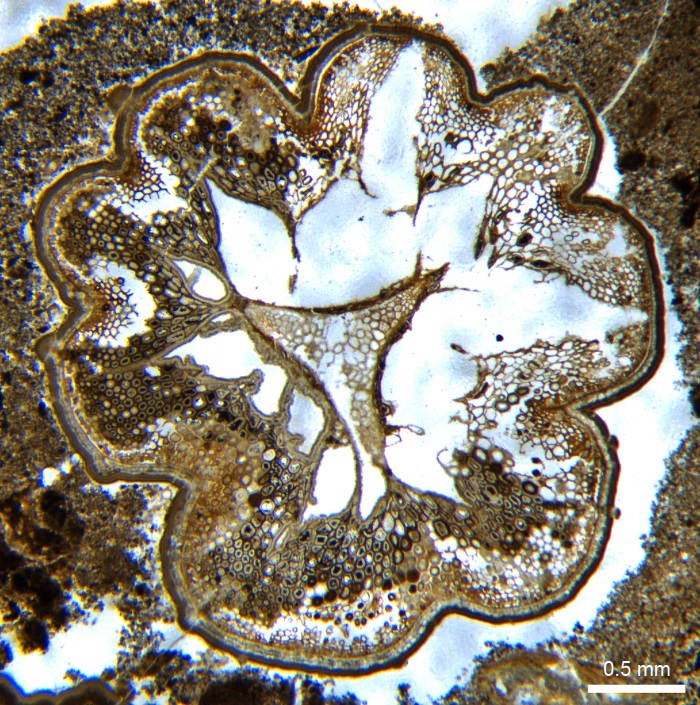
Sphenophyllum stem, Early Carboniferous, France
Anne-Laure Decombeix
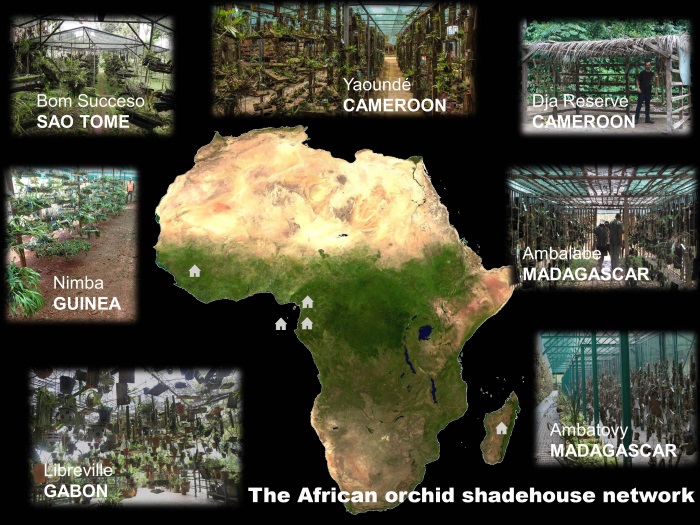
Orchid shadehouse network in Africa and Madagascar
Vincent Droissart
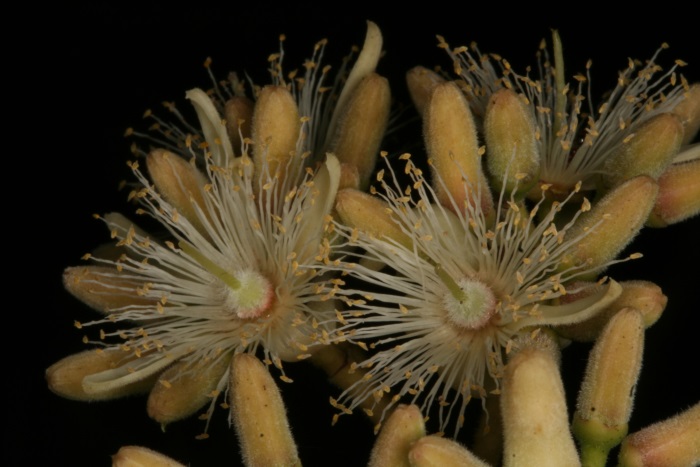
Flowers of Vantanea maculicarpa Sabatier & J. Engel (family Humiriaceae), new tree species for French Guiana (Phytotaxa 2018), Turtle Mountain (French Guiana)
Daniel Sabatier
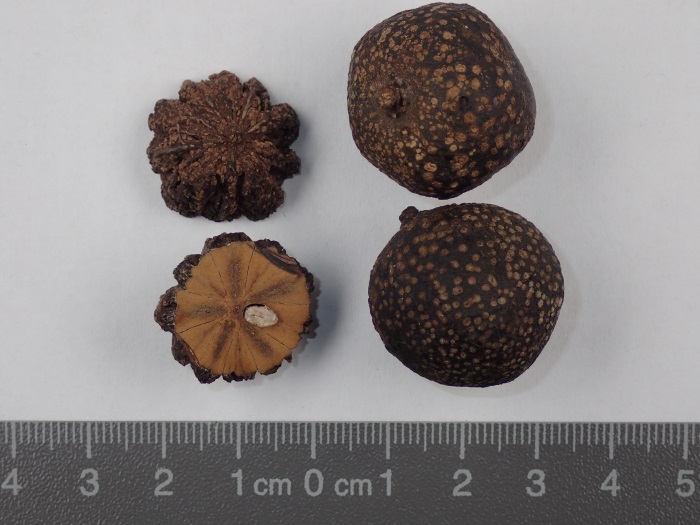
Fruits of Vantanea maculicarpa D. Sabatier & J. Engel (family Humiriaceae), new tree species for French Guiana (Phytotaxa 2018), Turtle Mountain (French Guiana)
Daniel Sabatier

Terminalia carinata D. Sabatier & J. Engel (family Combretaceae), new tree species for French Guiana (Adansonia 2020)
Laurence Ramon
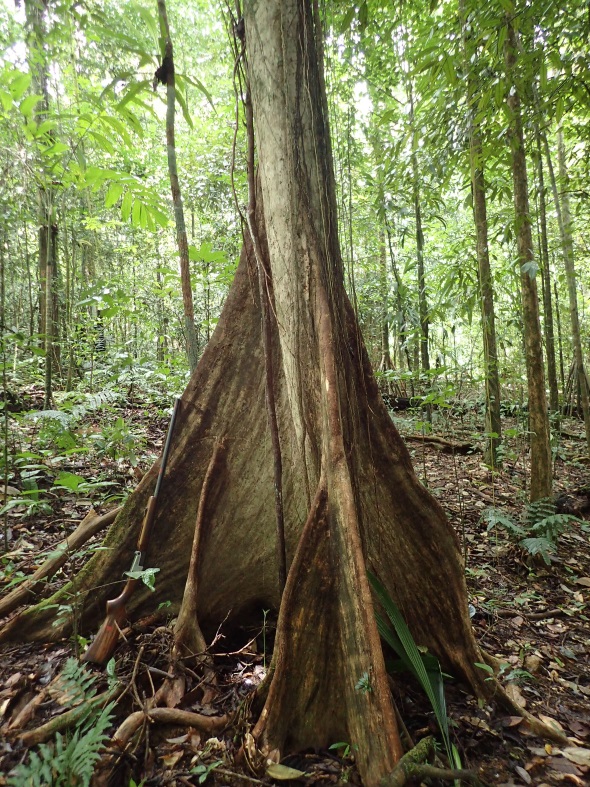
Chimarrhis microcarpa Standl. (Rubiaceae), Gentry inventory (individual code GalbP5G24) carried out at Mont Galbao (French Guiana) in March 2019.
Julien Engel

Aspidosperma carapanauba Pichon (Apocynaceae), GUYAFOR network of permanent plots (UMR EcoFoG, French Guiana), Trinidad nature reserve (individual code TRI1764), inventory carried out in 2013
Julien Engel
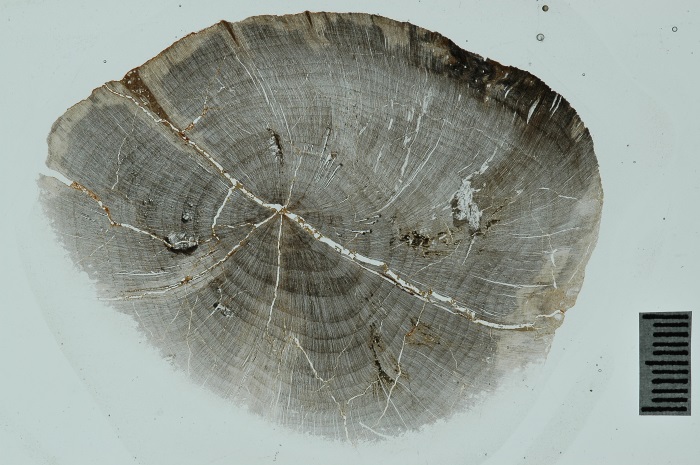
Callixylon root (Archaeopteridales, Late Devonian, -365 ma, Morocco)
Brigitte Meyer-Berthaud

Callixylon wood root (Archaeopteridales, Late Devonian, -365 ma, Morocco)
Brigitte Meyer-Berthaud
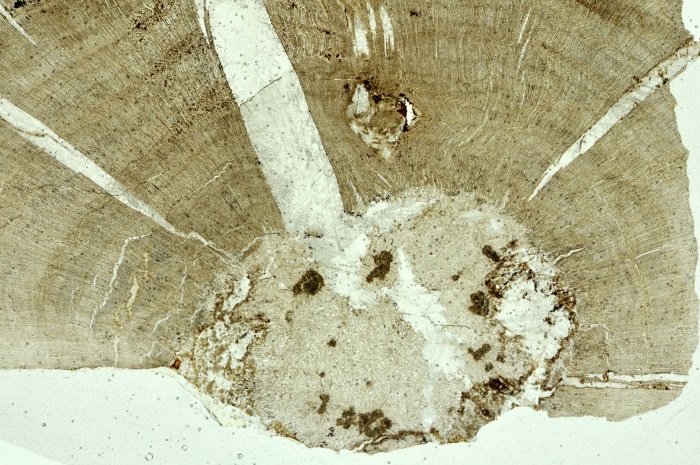
Callixylon stem (Archaeopteridales, Late Devonian, -365 ma, Morocco)
Brigitte Meyer-Berthaud

Fertile branch of Tetraxylopteris (Aneurophytales), Middle Devonian -385 ma, Australia
Brigitte Meyer-Berthaud

Cymastrobus cone (Isoetales), Late Devonian -360 ma, Australia
Brigitte Meyer-Berthaud

Polyxylon stem (Cladoxylopsida), Late Devonian -360 ma, Australia
Brigitte Meyer-Berthaud
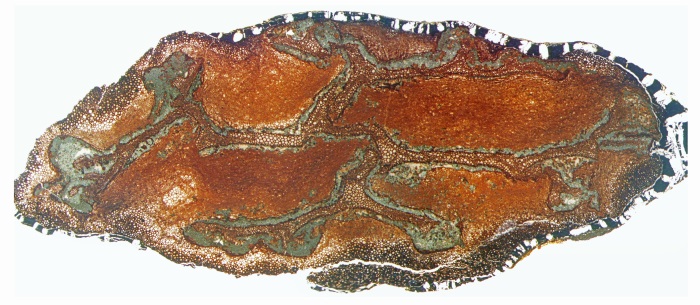
Keraphyton stem (Iridopteridales), Late Devonian -360 ma, Australia
Peer J.
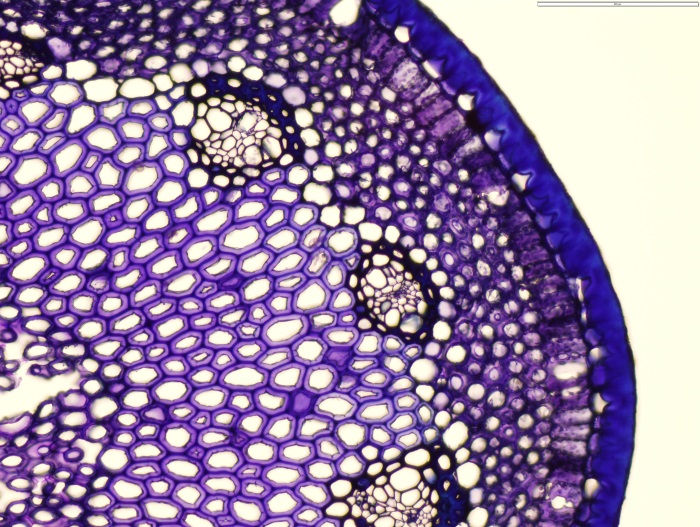
Leaf-section of Xyris nov. sp. (Xyridaceae) remarkable for the presence of palisade parenchyma and collenchyma.
J. Morel
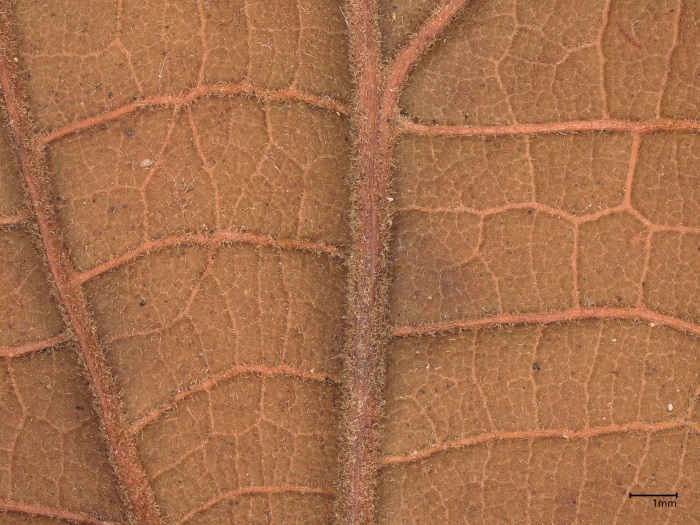
Pubescence of the abaxial side of the leaves of a new species of Cryptocarya (Lauraceae)
Jérôme Munzinger
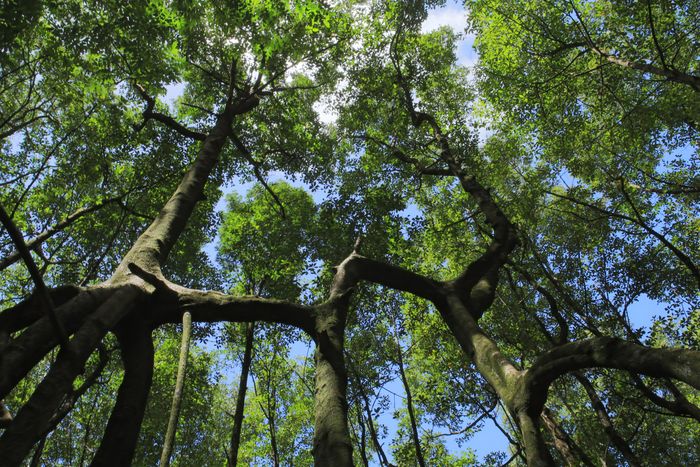
A 30 m high double-trunk Rhizophora mangle tree, Sinnamary River, French Guiana
Christophe Proisy
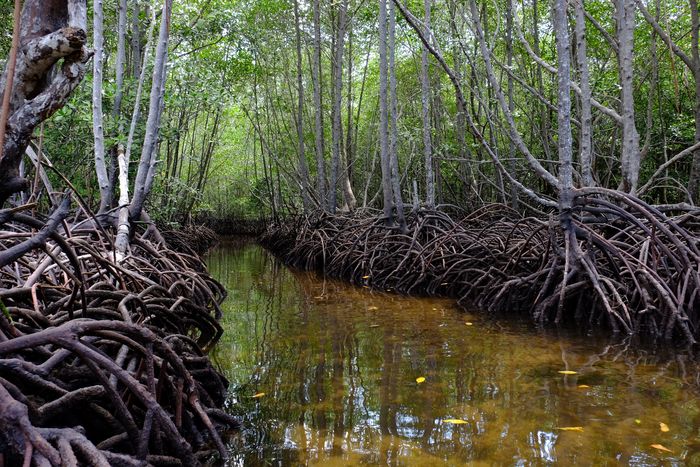
Rhizophora stylosa stands, Nusa Lembongan, Bali, Indonesia
Christophe Proisy
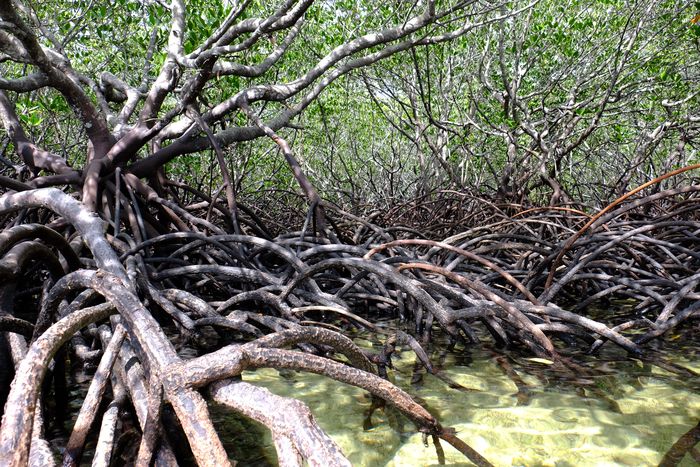
Sea-front Rhizophora stylosa, stands, Nusa Lembongan, Bali, Indonesia
Christophe Proisy
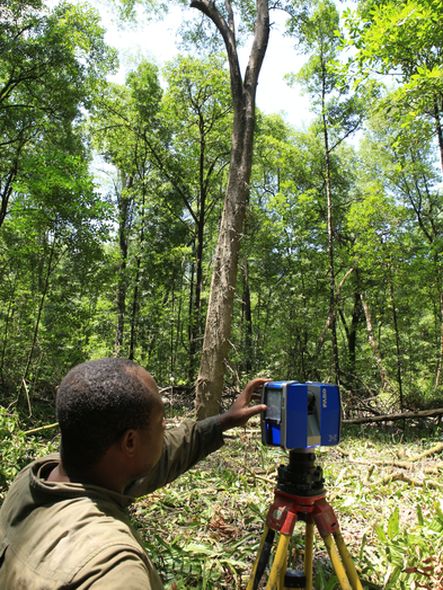
Terrestrial laser scanning (TLS) experiment carried out with a FARO X330 instrument in order to estimate wood volume of trunk and branches of adult mangove trees reaching 45 m high. This work is being conducted by Adewole Olagoke, FONASO-granted PhD student in collaboration with the University of Dresdent (TU Dresden), Germany.
Christophe Proisy

ALS vegetation profile - Paracou, French Guiana
Grégoire Vincent

Combining ALS and TLS data - Paracou, French Guiana
Grégoire Vincent
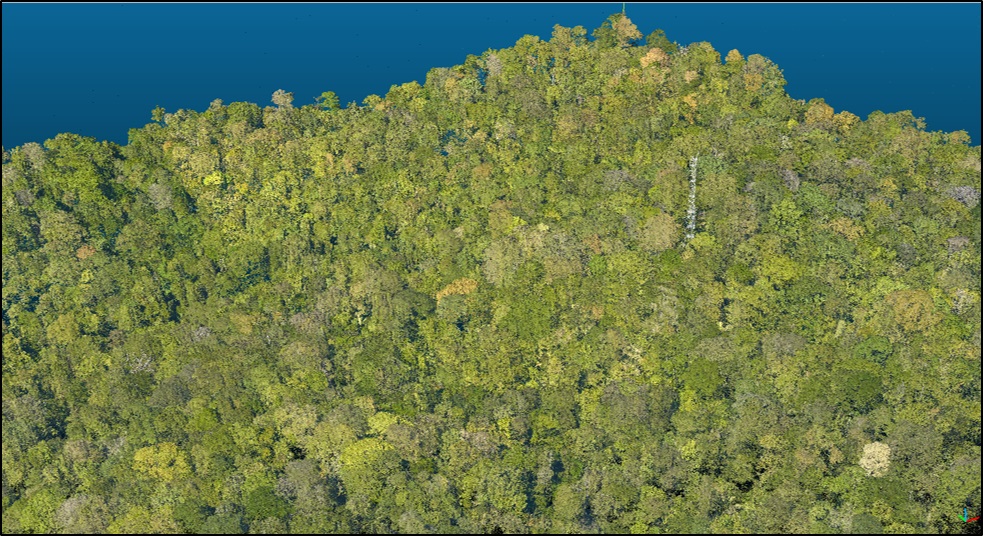
Lidar point cloud colorised by fusion with aerial RGB images
Grégoire Vincent

Dry season UAV picture of a semi-deciduous forest in Eastern Cameroon
Nicolas Barbier
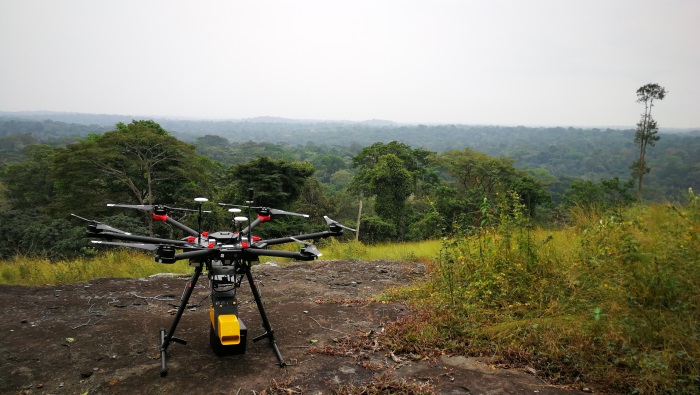
LiDAR scanner (Yellowscan) mounted on a drone on the Bouamir inselberg in the Dja NP (Cameroon)
Nicolas Barbier

Lecomptedoxa klaineana forest in the Korup NP (Cameroon)
Nicolas Barbier
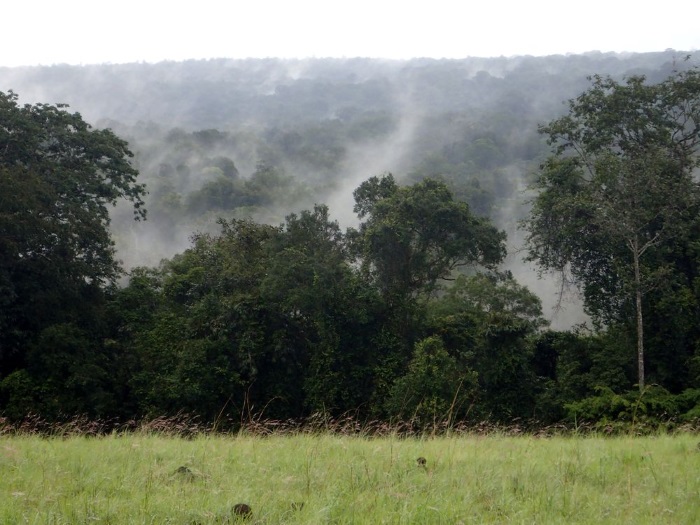
Evapo-transpiration in a forest-savanna mosaic of the Lower Ogooue region (Gabon)
Nicolas Barbier
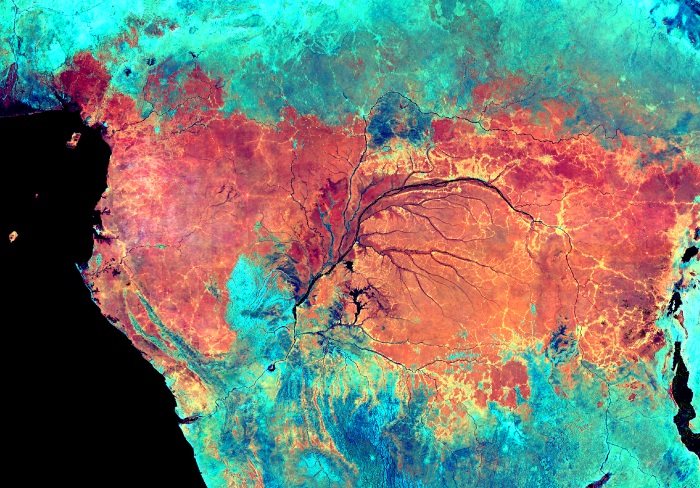
MODIS SWIR-NIR mosaic over Central Africa. Earth observation from space provides unique tools to study landscape dynamics through space and time.
Gaëlle Viennois, Nicolas Barbier

3D representations of tropical forest trees in Cameroon using terrestrial laser scanning (Triplochiton scleroxylon, Terminalia superba, Piptadeniastrum africanum).
Nicolas Barbier, Pierre Ploton, Stéphane Momo Takoudjou
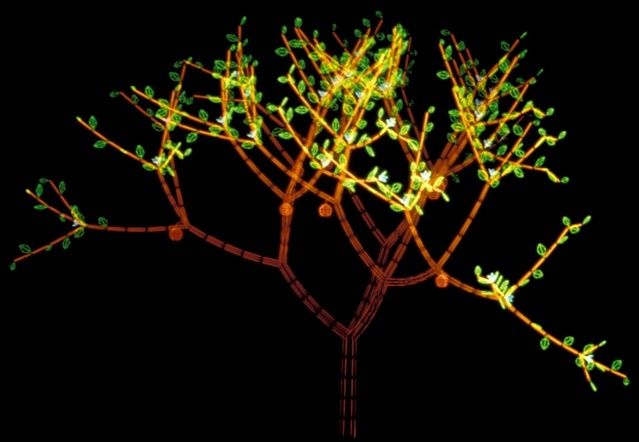
One of the first 3D representations of simulated plants. A Leeuwenberg model simulated at CIRAD is displayed on the 3D vector station of the Laboratory IGBMC from University of Strasbourg (Machine PS300 Evans & Sutherland). Such a representation is called a wireframe view. February 1985 (Modelling: P. de Reffye; PS300: B. Ripp)
3D et photo : Marc Jaeger

Snapshot on the Leeuwenberg model on the PS300 station. The wireframe representation is in real time, the intensity of the lines decreases with depth. February 1985 (Modelling: P. de Reffye; PS300: B. Ripp)
3D et photo : M. Jaeger
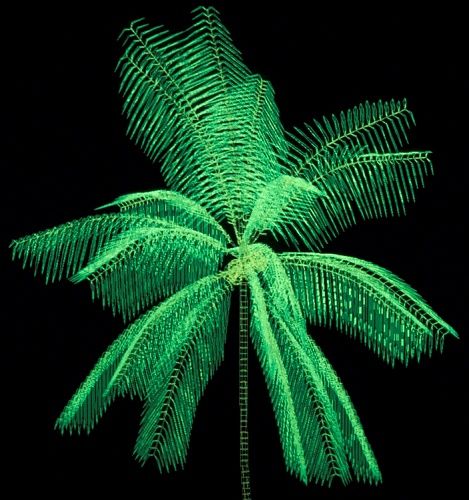
Simulation and wireframe representation of a coconut tree. In this simulation, the structure of each palm is simulated as if it were a branched axis, thus allowing curvatures to be taken into account. The simulation carried out at CIRAD is displayed on a Tektronix colour terminal of the CNRS image synthesis team in Strasbourg Cronenbourg. May 1985.
3D et photo Marc Jaeger
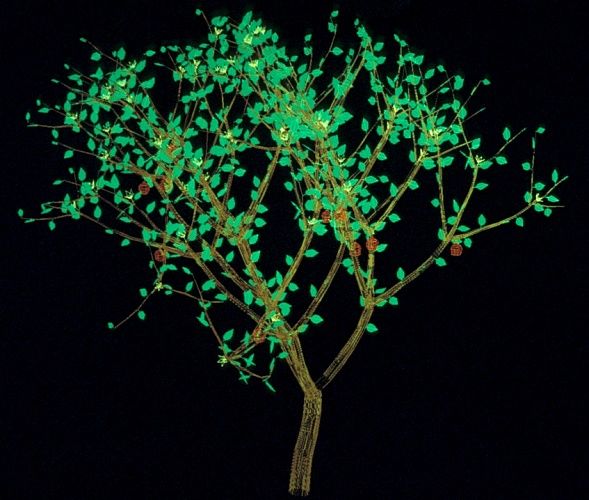
Simulation and wireframe representation of a Leeuwenberg model simulation. The simulation carried out at CIRAD is displayed on a Tektronix colour terminal of the CNRS team in Strasbourg Cronenbourg. The axes and fruits are represented in wireframe, the leaves in surface. There is no depth processing. May 1985.
3D et photo M. Jaeger
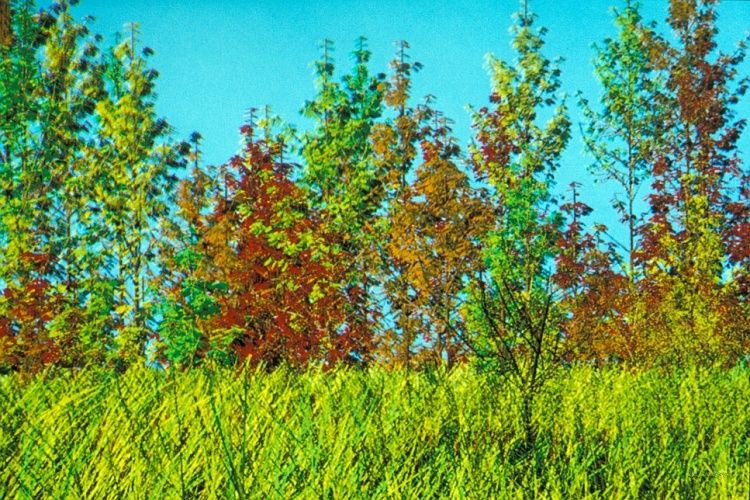
Amap's first virtual landscape. The scene is composed of simulated poplars in the background, a prunus tree and grasses in the near plane. The scene is obtained on a 256 colour Tektronix screen. It is built from three layers, adding one by one the poplars, then the prunus and finally the grasses. 1986 (Modelling P. de Reffye; simulation, visualisation and photo M. Jaeger)
Marc Jaeger
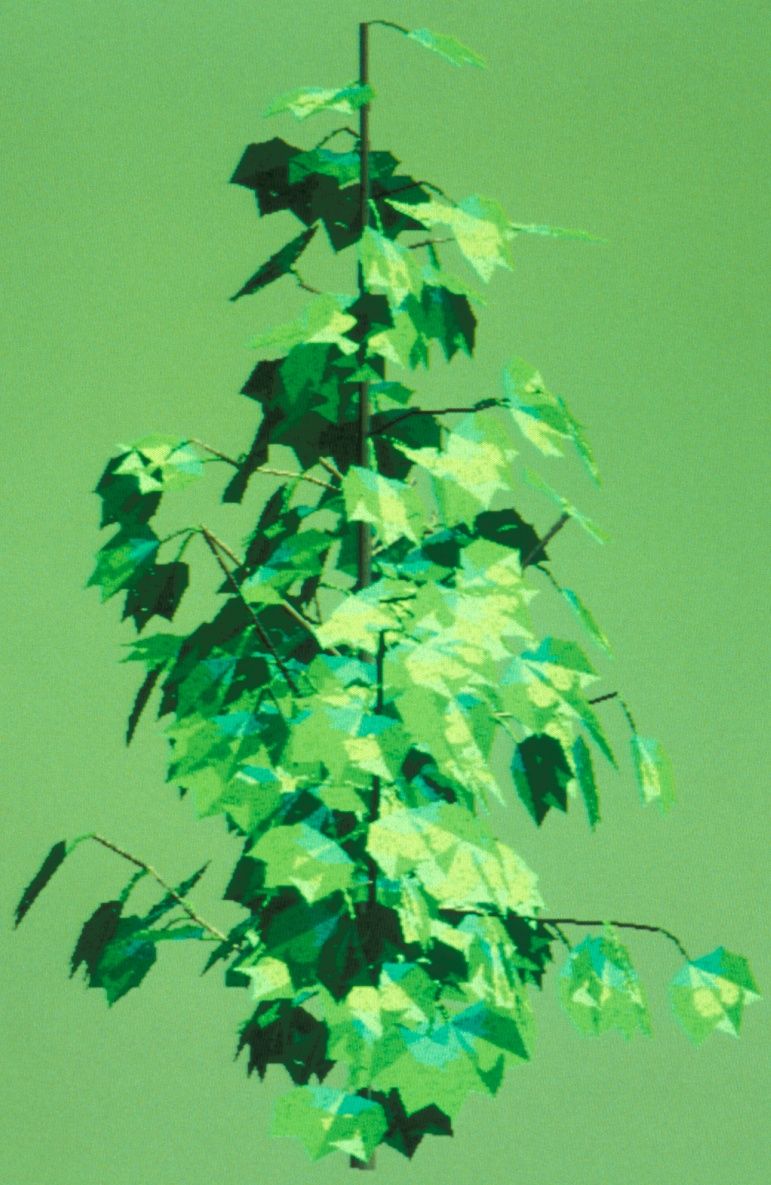
Simulation and visualisation of a cotton plant. From 1987 onwards, the methodology for measuring and simulating architecture became mature and began to be used, here on the cotton plant. The representation and visualisation are no more requesting specific 3D machines, and take into account the illumination. 1987. The work is published in journals, in particular Siggraph'88 (Modelling P. de Reffye & R. Cognee; simulation, visualisation and photo M.Jaeger)
Marc Jaeger

Paris Cité Grand Prix Scientifique award in 1990. "Palm grove under the mist". 1990
Marc Jaeger
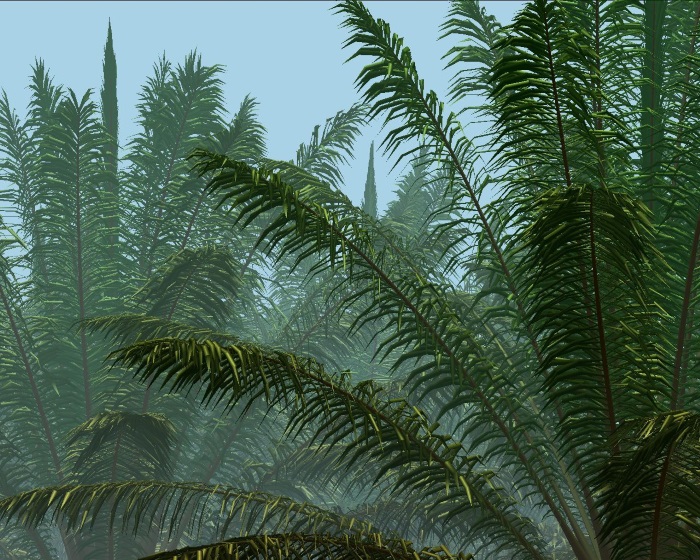
CNRS Paris Cité Scientific Grand Prize in 1990. Palm grove under the mist. Modelling, simulation and visualisation of an oil palm grove. First plantation scene with shading calculation. The image is extracted from an animation calculated frame by frame. 1990 (Modelling: P. de Reffye, R. Lecoustre. Scene, simulations and animation: P. Dinouard and M. Jaeger)
Marc Jaeager

Modelling and simulation of a collection of Begonias for the city of Rochefort. Awarded image at the Electronic Theater of Sigraph'91 (Las Vegas, USA). 1991 (Modeling and simulation of Begonias: R. Lecoustre 3D greenhouse and photo: M. Jaeger)
Marc Jaeger
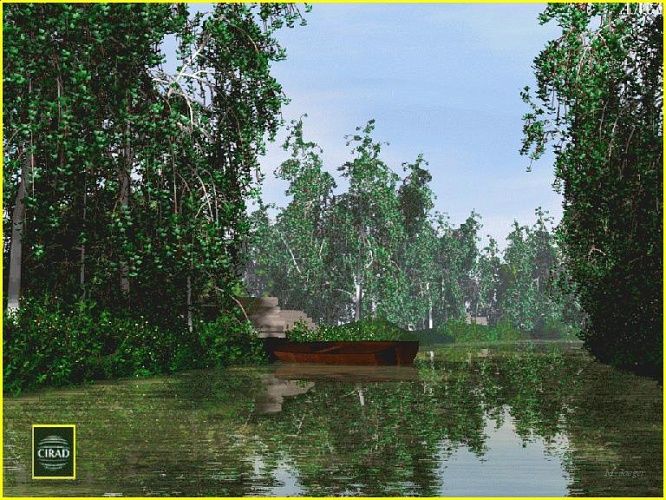
Natural scene composed with simulated plants from Amap's digital nursery. Mist and reflections added by post processing. 1992.
Scène 3D et photo : S. Chetaille

Plant modelling and paleological scene. 1994.
Modélisation, création de la scène et photo : R. Lecoustre

Greeting card made from Amap's digital plant library. 2003.
Conception et photo : R. Lecoustre

Functional representation of a virtual landscape. We simulate here a Rx scan acquisition on a virtual natural scene. In this transformation, biomass is converted to density. The visualisation of the created voxel space uses a transfer table (medical imaging techniques). The shading is post processed. 2006.
Modélisation, simulation, visualisation et photo : M. Jaeger

Measurement campaign: Sylvie Sabatier. Antagnac, Ruffiac (Lot-et-Garonne), 1992
Daniel Barthélémy

Study of Pin radiata. Chili, 1995
Daniel Barthélémy
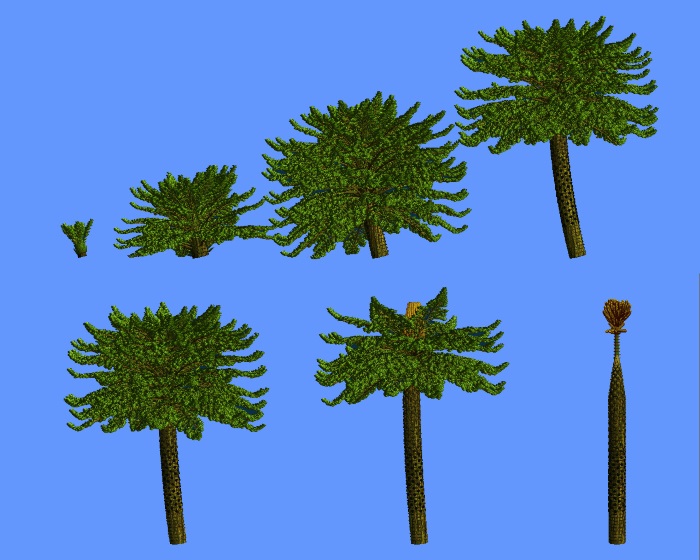
Computer simulation of the growth of Calamites multiramis, Upper Carboniferous (- 300 ma). Ref: Daviero & Lecoustre, 2000, Rev. Palaeobot. Palynol. 109: 135-148.
2000 Elsevier Inc
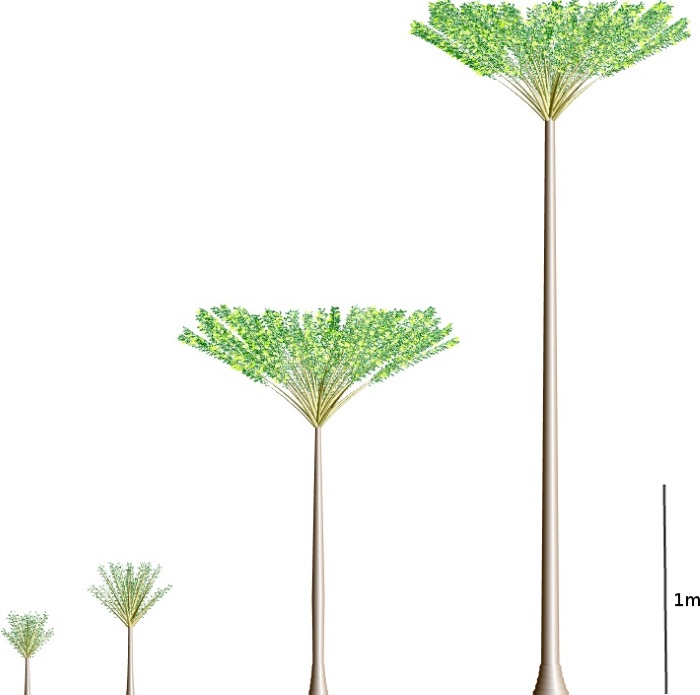
Computer simulation of the growth of Pseudosporochnus, Middle Devonian Moyen (-385 ma). Ref: Dambreville, Meyer-Berthaud, Barczi, Decombeix, Griffon, Rey, 2018, Transformative Paleobotany, Krings et al. (eds), Academic Press, https://doi.org/10.1016/B978-0-12-813012-4.00003-6.
2018 Elsevier Inc
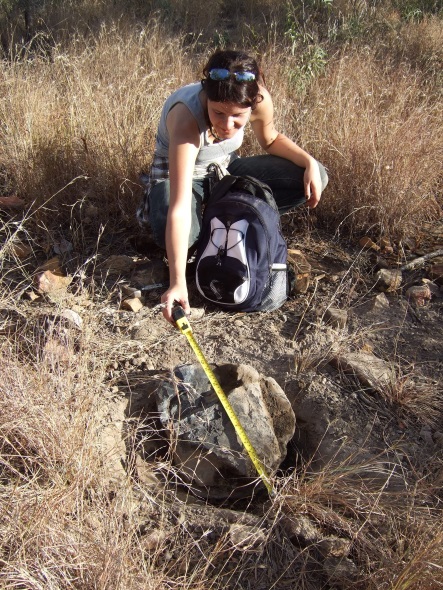
Prospecting fossil trees in the Lower Carboniferous (-340 ma) of Queensland, Australia.
Brigitte Meyer-Berthaud

Clearing an Archaeopteris trunk base from the Upper Devonian (-360 ma) of Morocco.
Brigitte Meyer-Berthaud
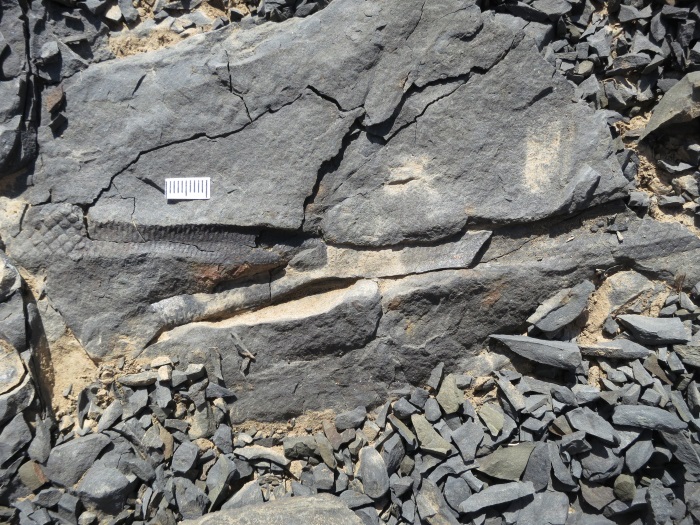
Decortication levels of a branched Leptophloeum axis from the Upper Devonian (-360 ma) of New South Wales, Australia.
Brigitte Meyer-Berthaud.

Transverse section of an Archaeopteris root from the Upper Devonian (-360 ma) of Morocco. Ref: Meyer-Berthaud, Decombeix, Ermacora, 2013, Int. J. Pl. Sci. 174: 364-381.
2013 University of Chicago

Measurement campaign: Yves Caraglio and Sylvie Sabatier. Jura 1992
daniel Barthélémy

DISTEC logo

Flowering of Eriocaulaceae after fire, Brazil
Tristan Charles-Dominique
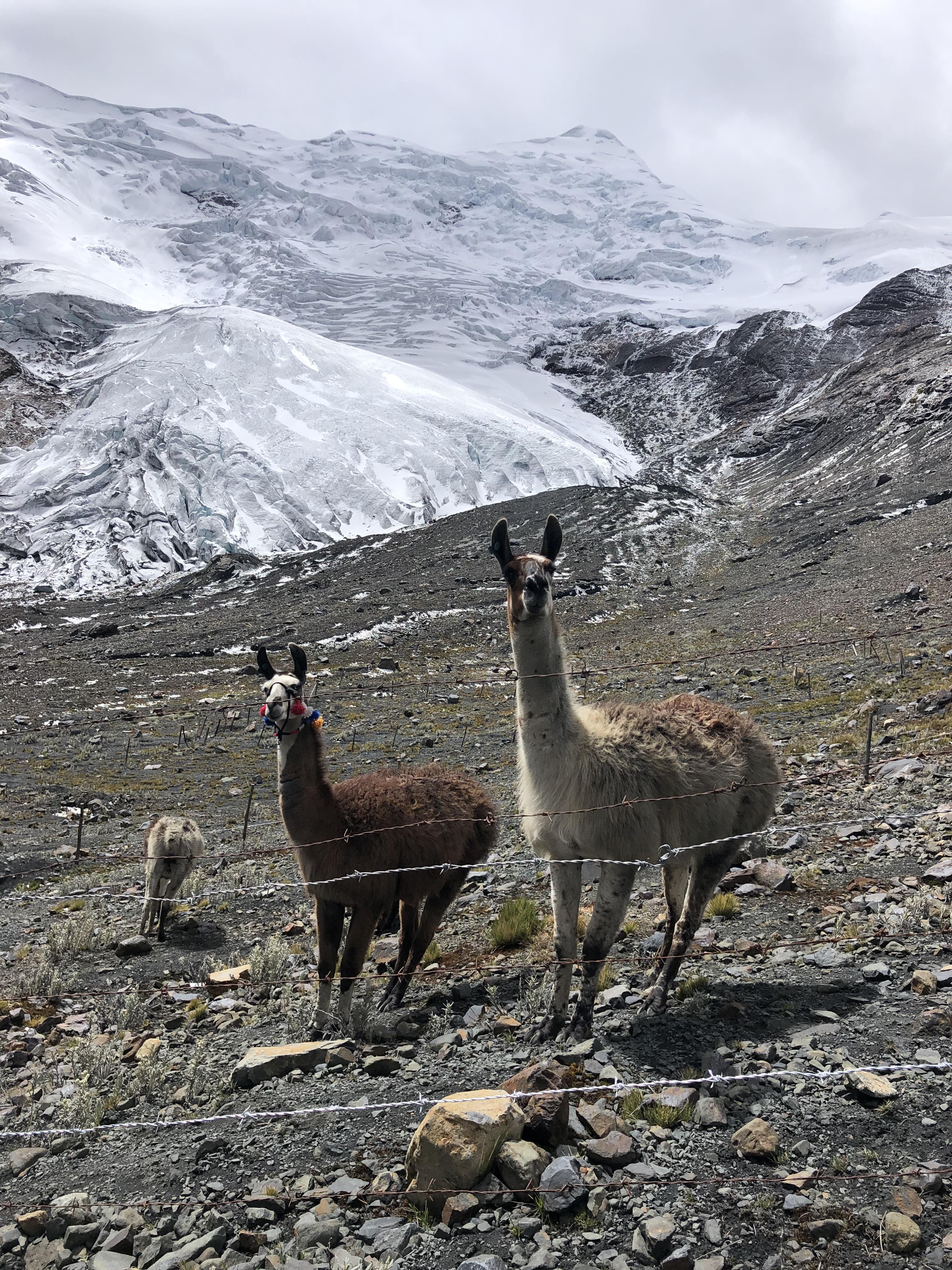
Novel ecosystems developing close to Uruashraju glacier, Peru
Anaïs ZIMMER
AMAP conducts research on plants and vegetation at disciplinary interfaces (Life and Earth Sciences, Mathematics, Computer Sciences, Physics), at different scales (from cell to landscape) and in various research fields (Plant Biology, Agronomy, Ecology, Systematics, Palaeobotany).
This interdisciplinary culture has been built over several decades. It originates with the creation by Philippe de Reffye of the Plant Architecture Modelling program in the 1980s at CIRAD-GERDAT. It was strengthened with the association of INRA
(the French National Research Institute in Agronomy) in 1999 and later with the hosting of teams of botanists, ecologists and paleobotanists from CNRS (the French National Center for Scientific Research), IRD (the French National Research Institute for Sustainable Development)
and the University of Montpellier in the early 2000s. This expanded partnership formed the basis for the creation of the Joint Research Unit (UMR - Unité Mixte de Recherche) in 2001, a basis that will be strengthened with the association of
the IRD herbaria of Nouméa and Cayenne in 2009. The lab has now 5 supervisory bodies (CIRAD, CNRS, INRAE, IRD, University of Montpellier).
The cohabitation in the same place and over a long period of time of multiple disciplines and research fields has made it possible to bring out innovative and structuring, even transdisciplinary approaches. More importantly, this diversity has forged a strong collective identity that continues to this day.
The unit is hosted by CIRAD in two nearby buildings (PS1 and PS2) at the Parc Scientifique Agropolis, boulevard de la Lironde at Montferrier-sur-Lez, over a total area of 1274 m2. The two herbaria, whose scientific management responsibility has been entrusted to AMAP,
are secondary sites of the unit, located on the IRD campuses of Nouméa in New Caledonia and Cayenne in French Guiana.